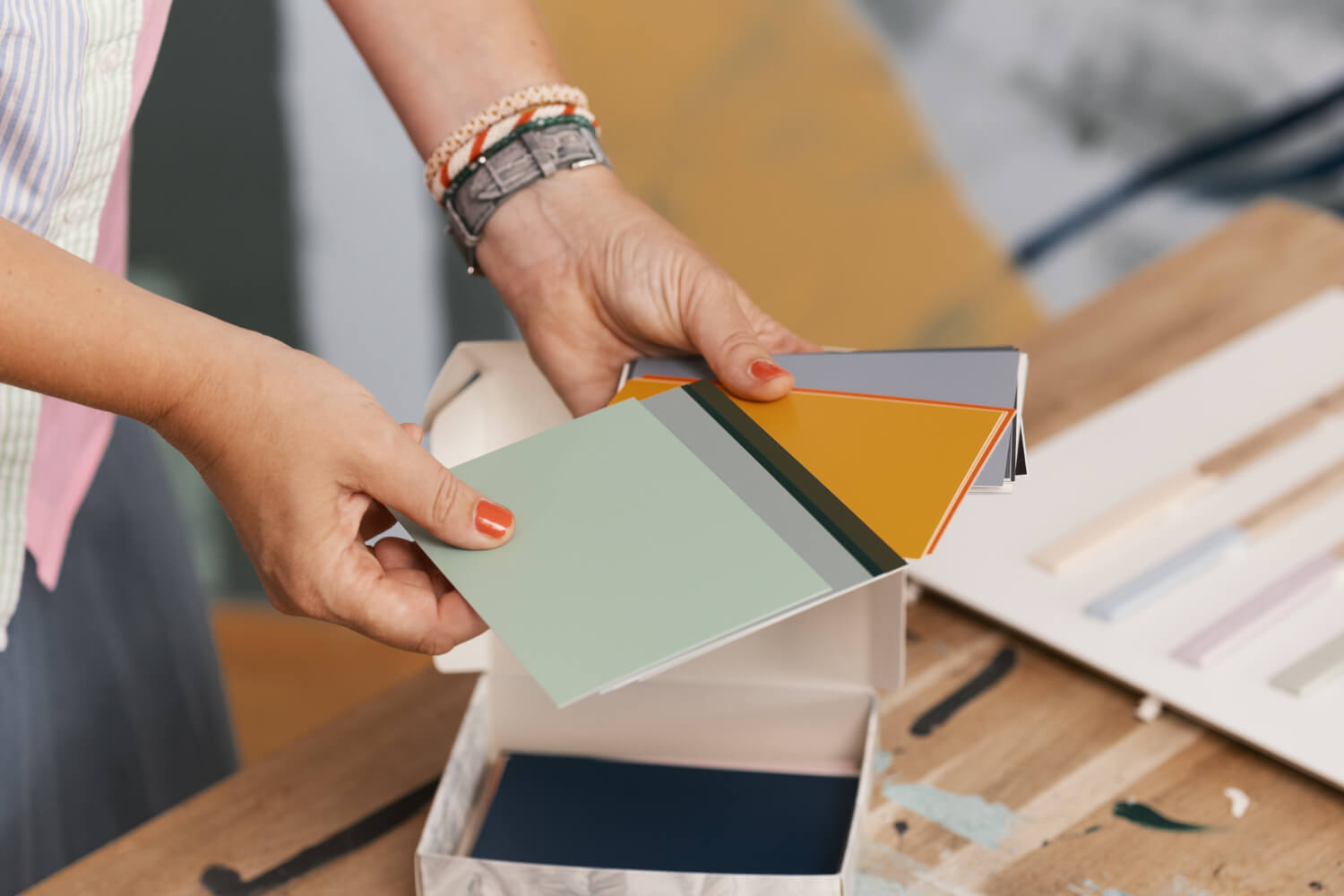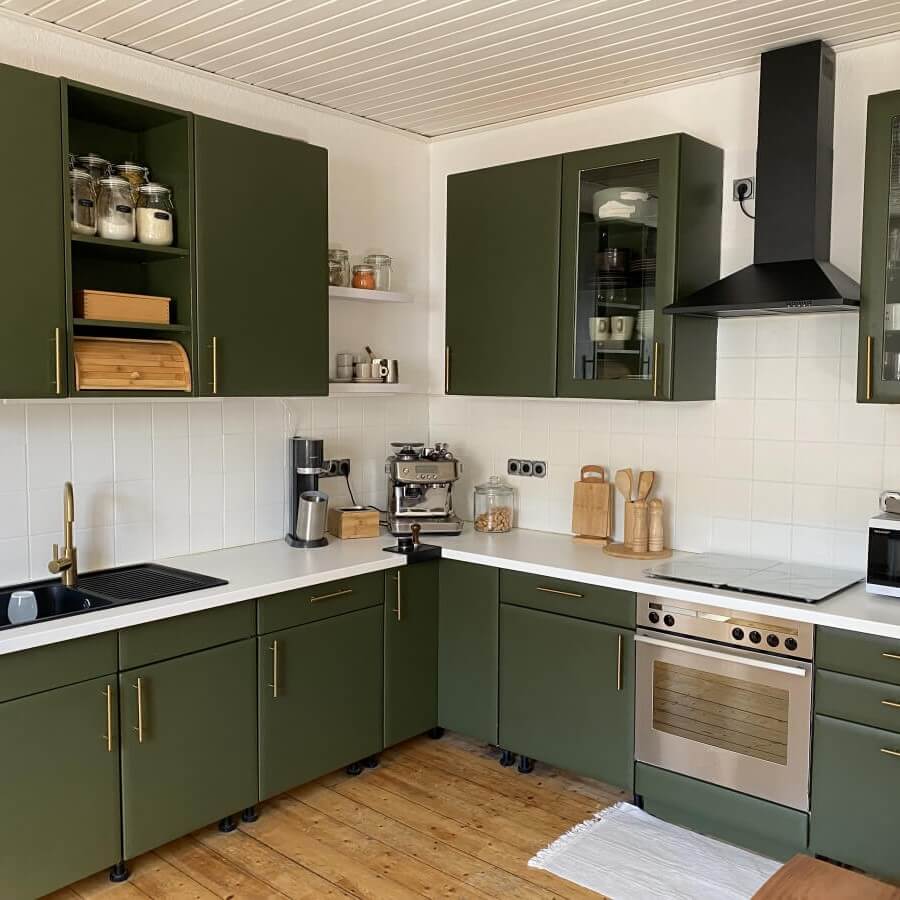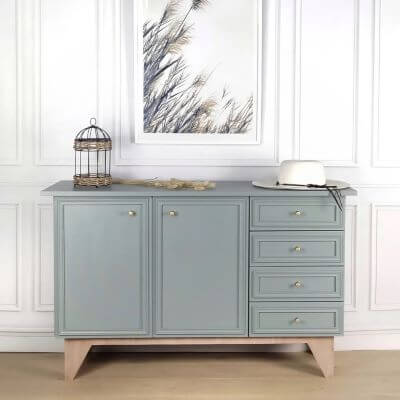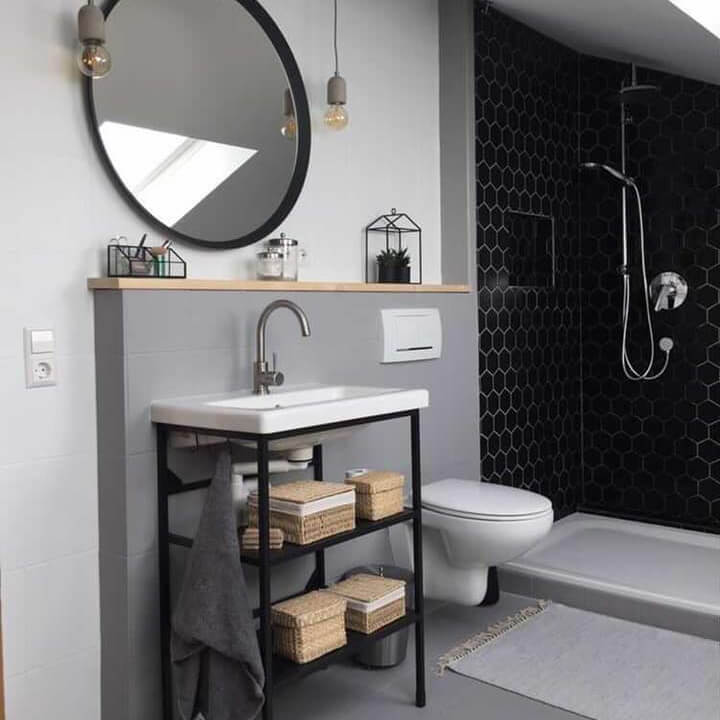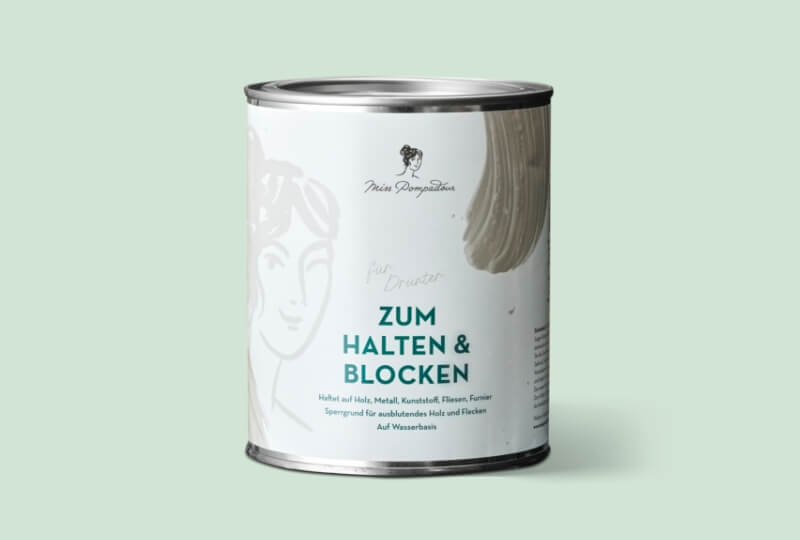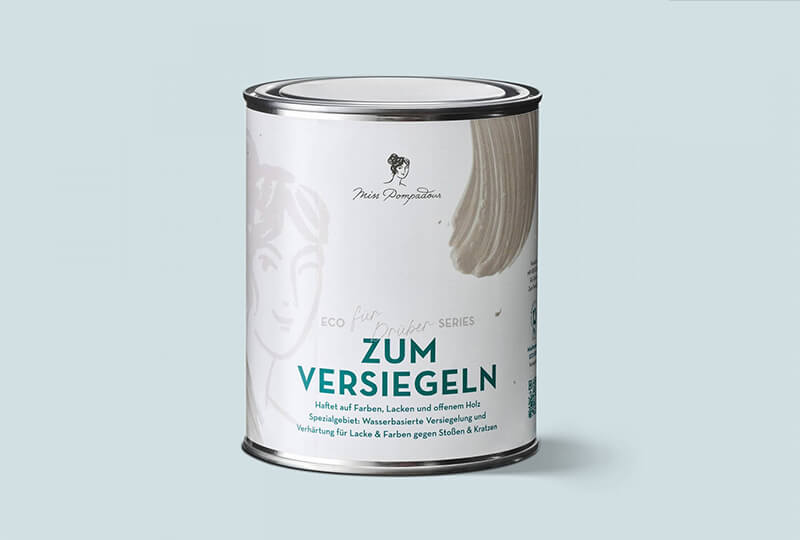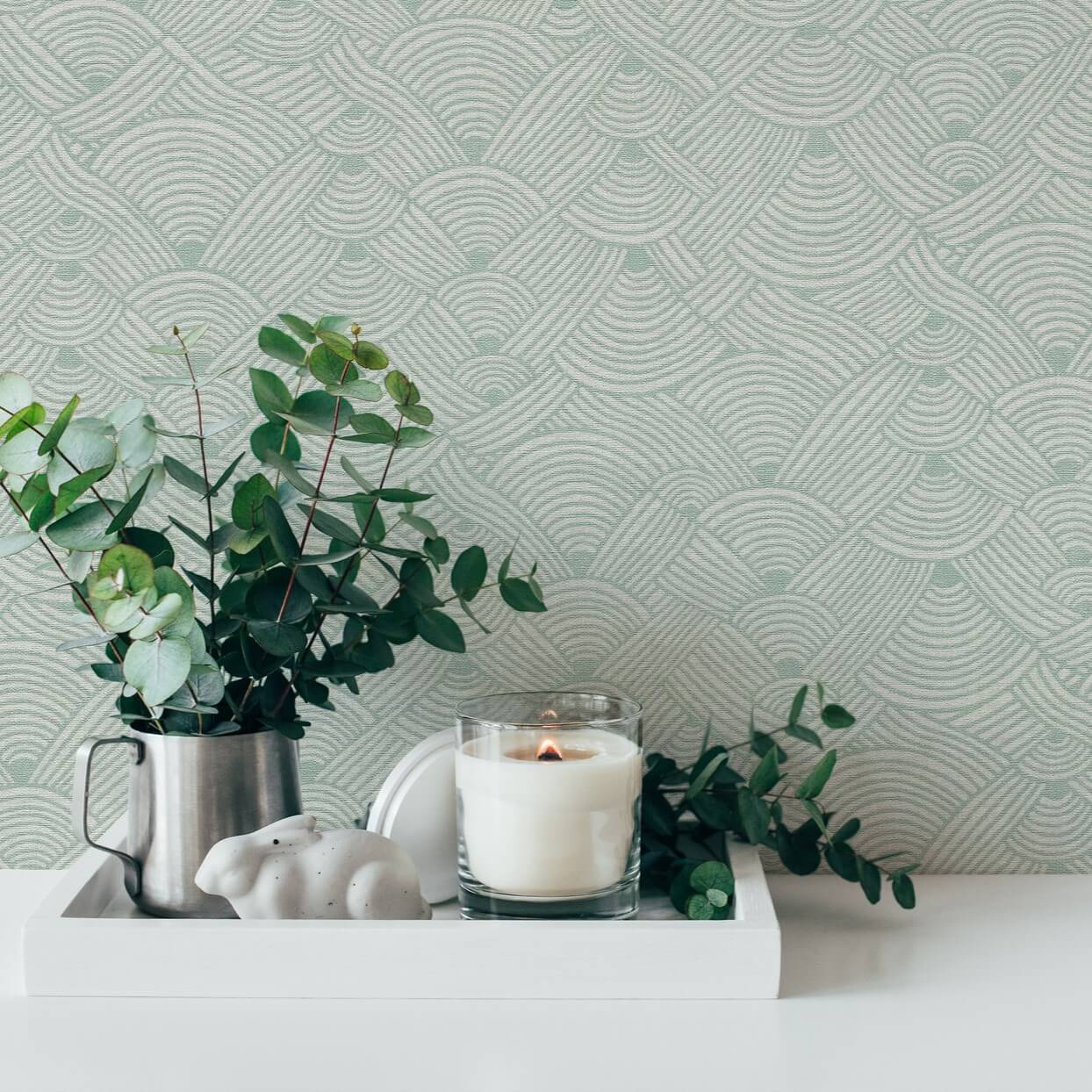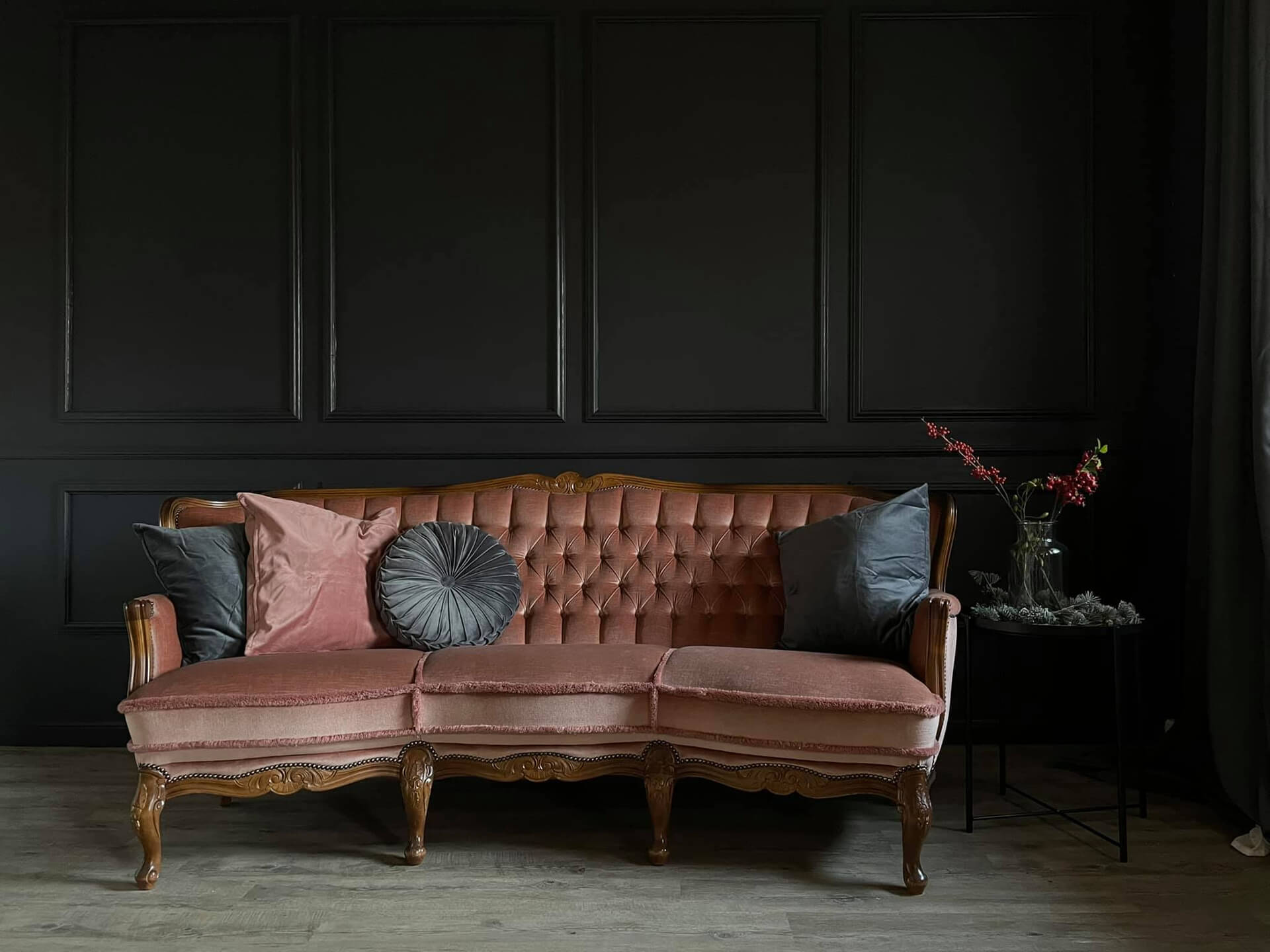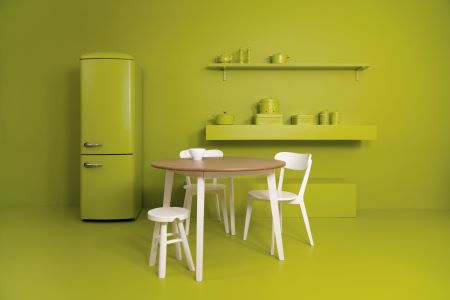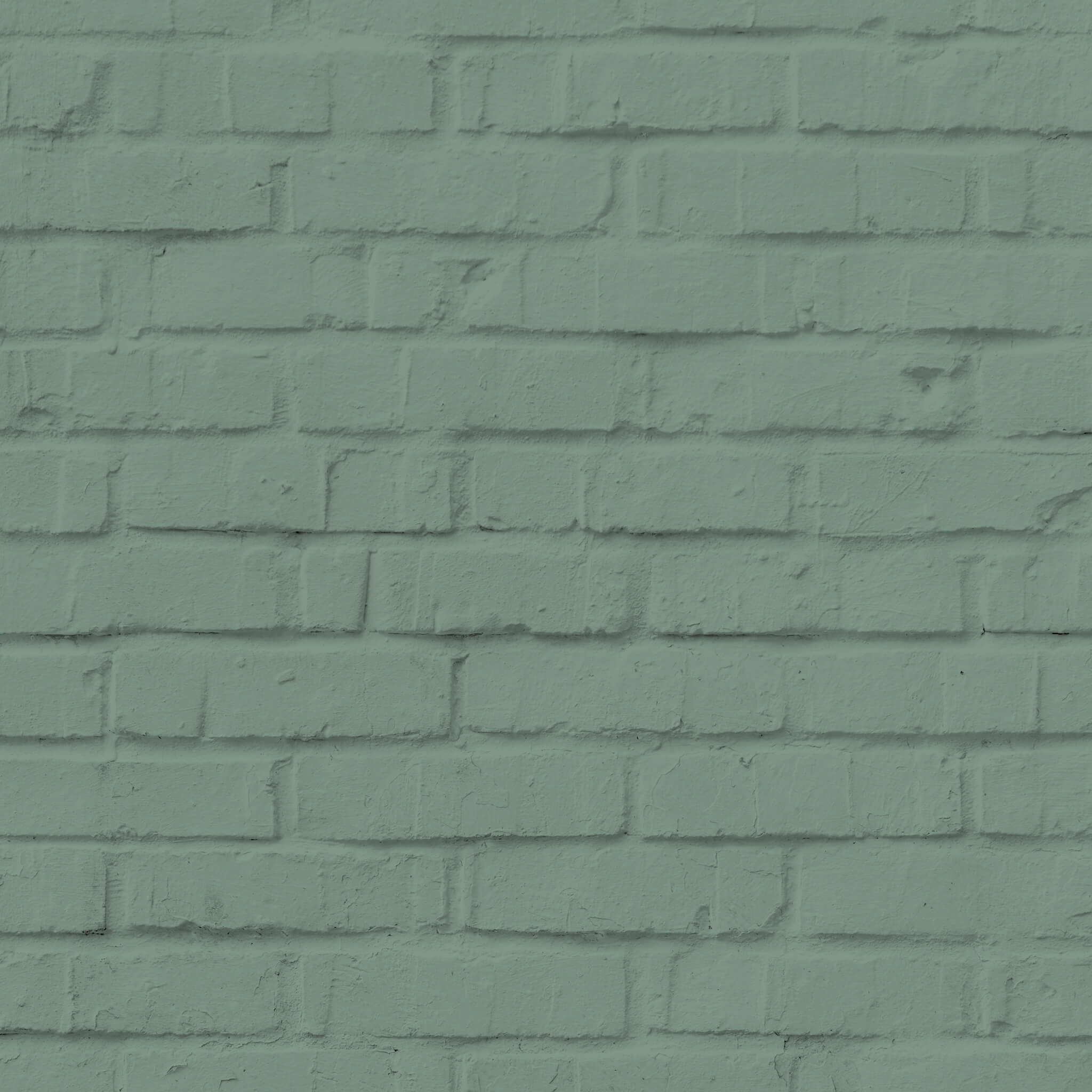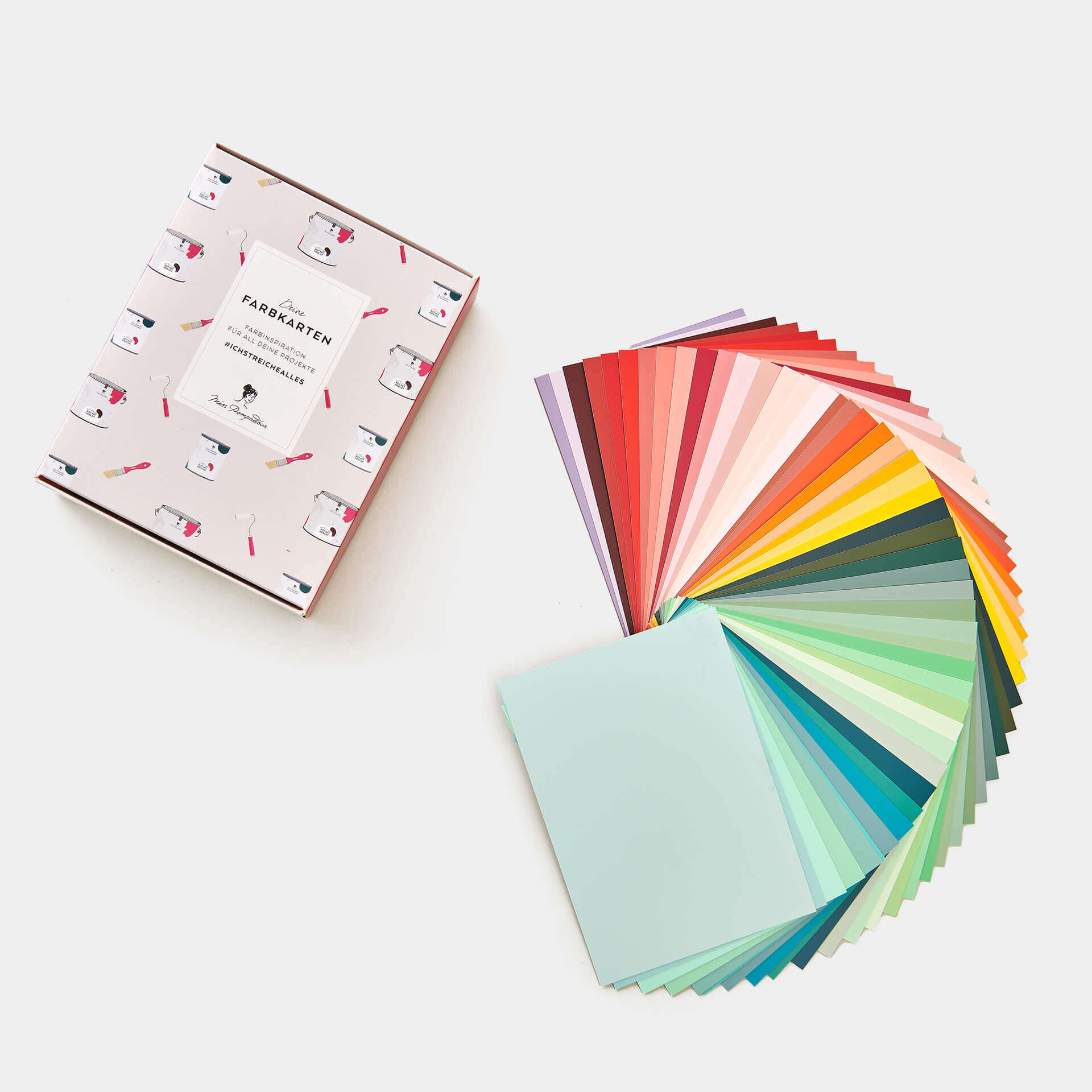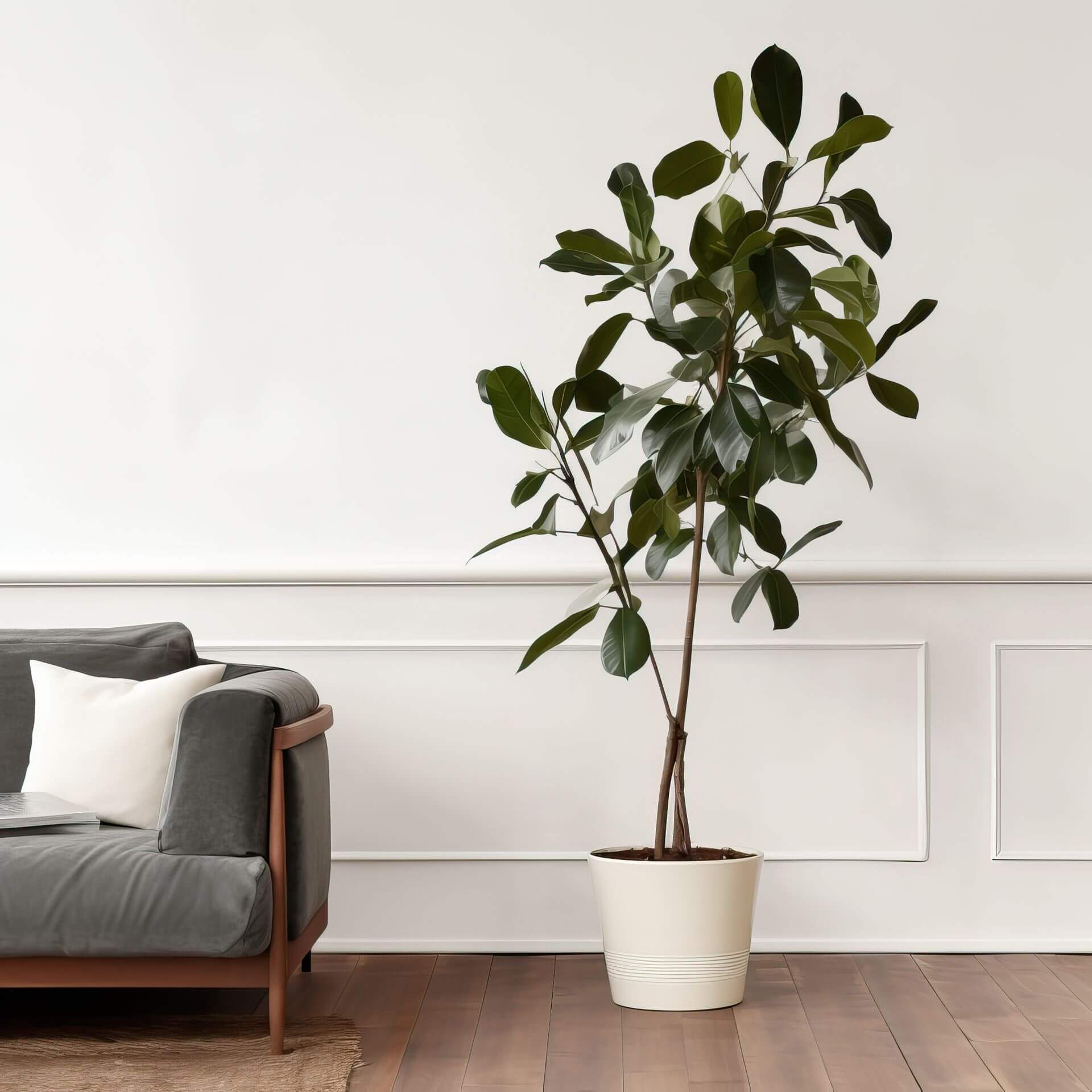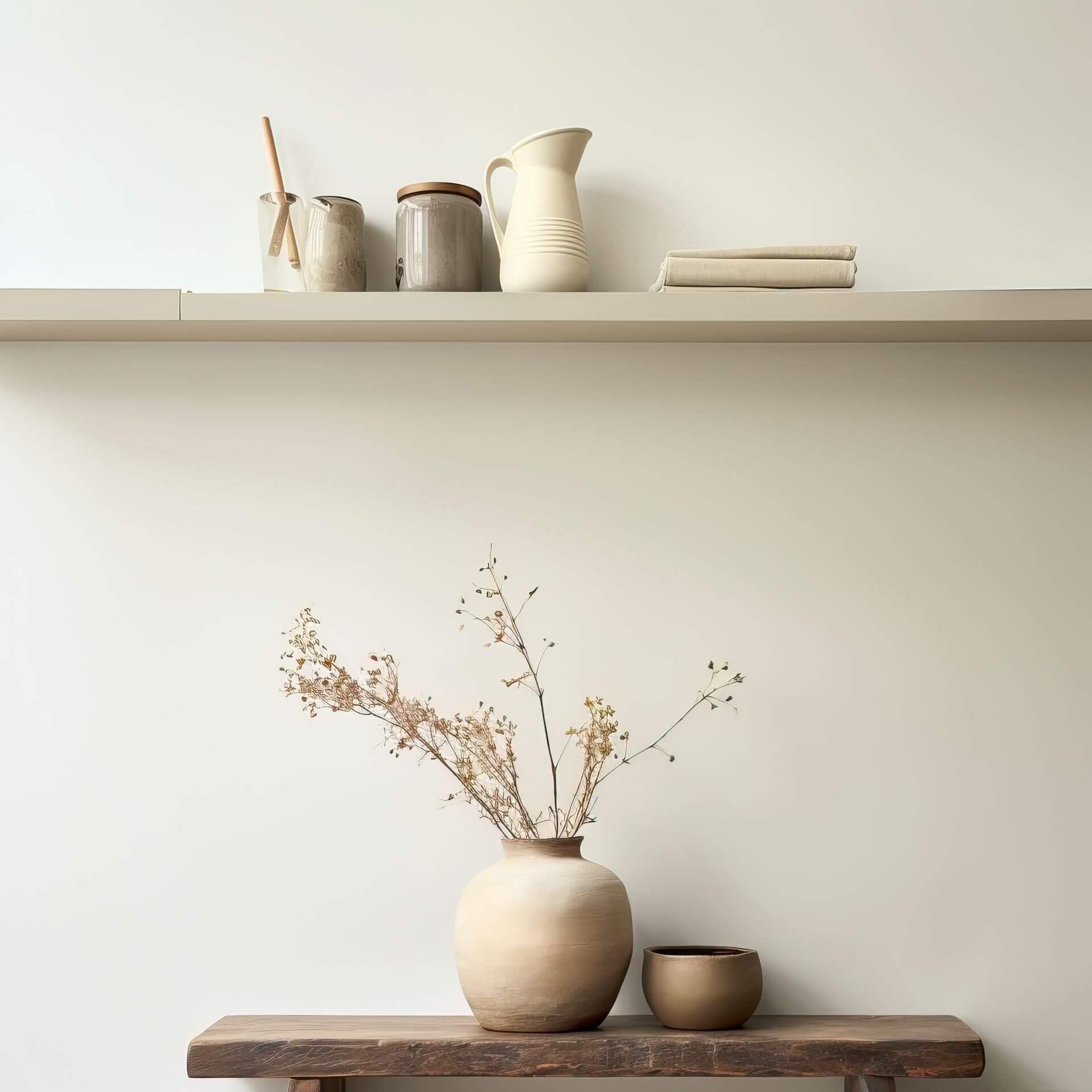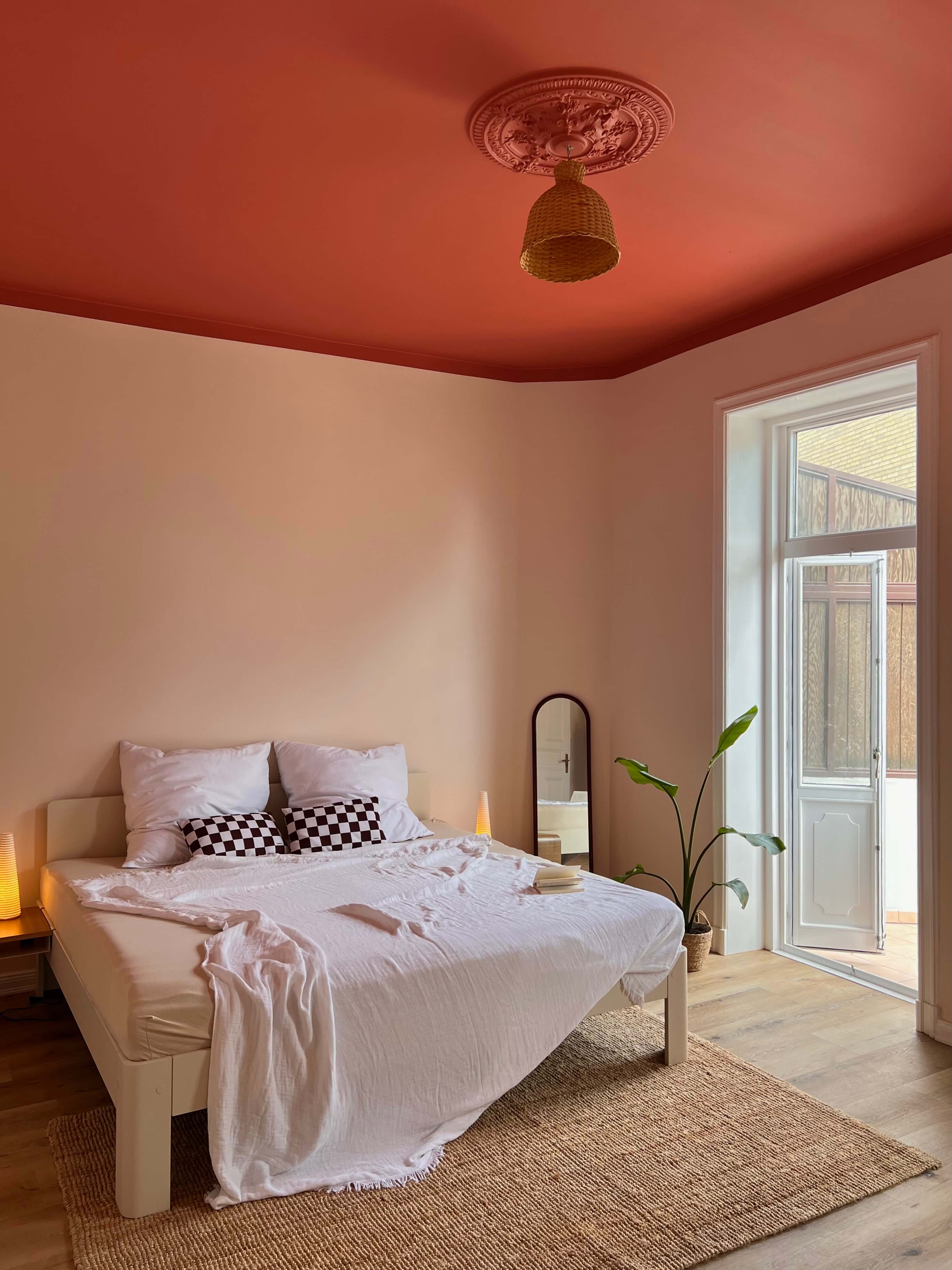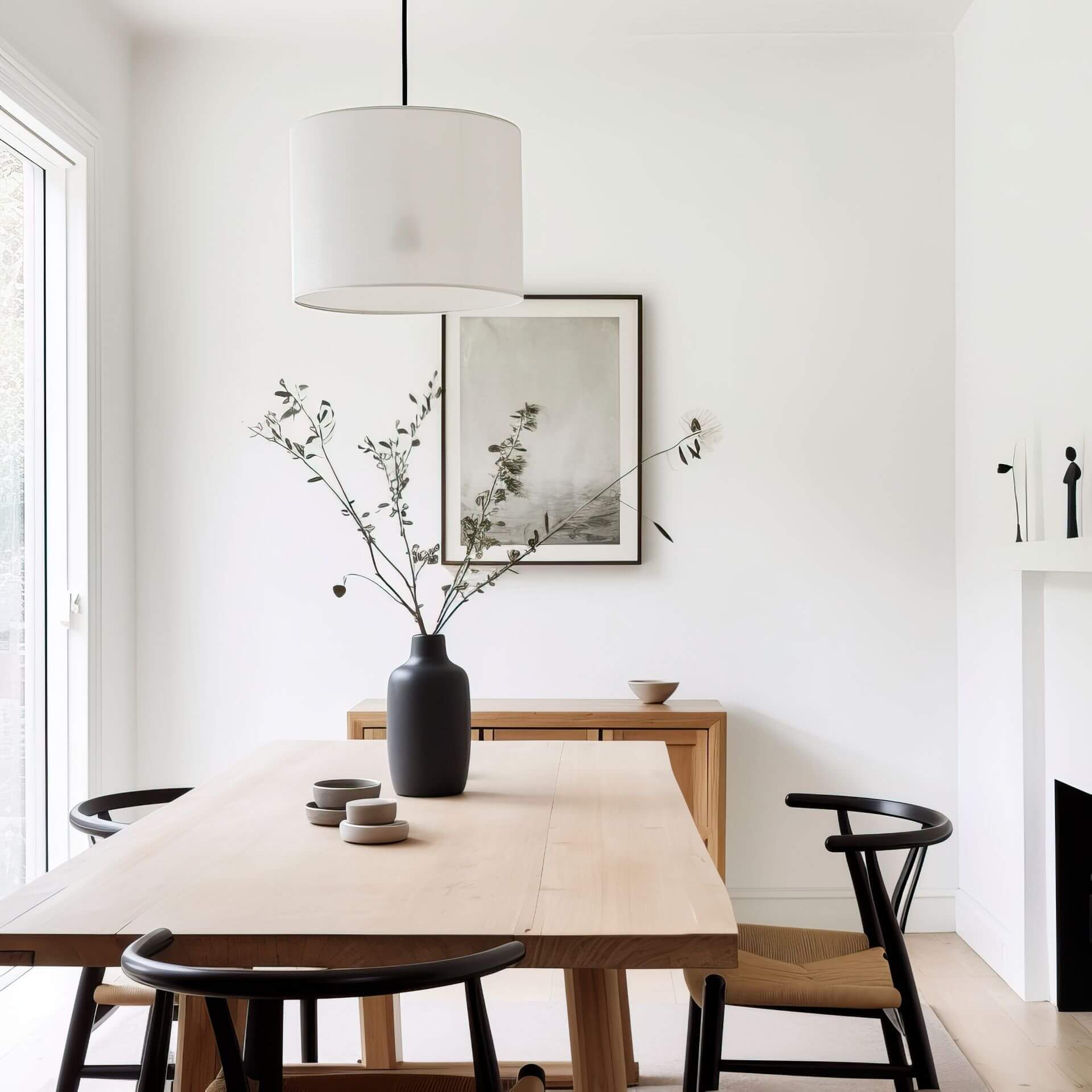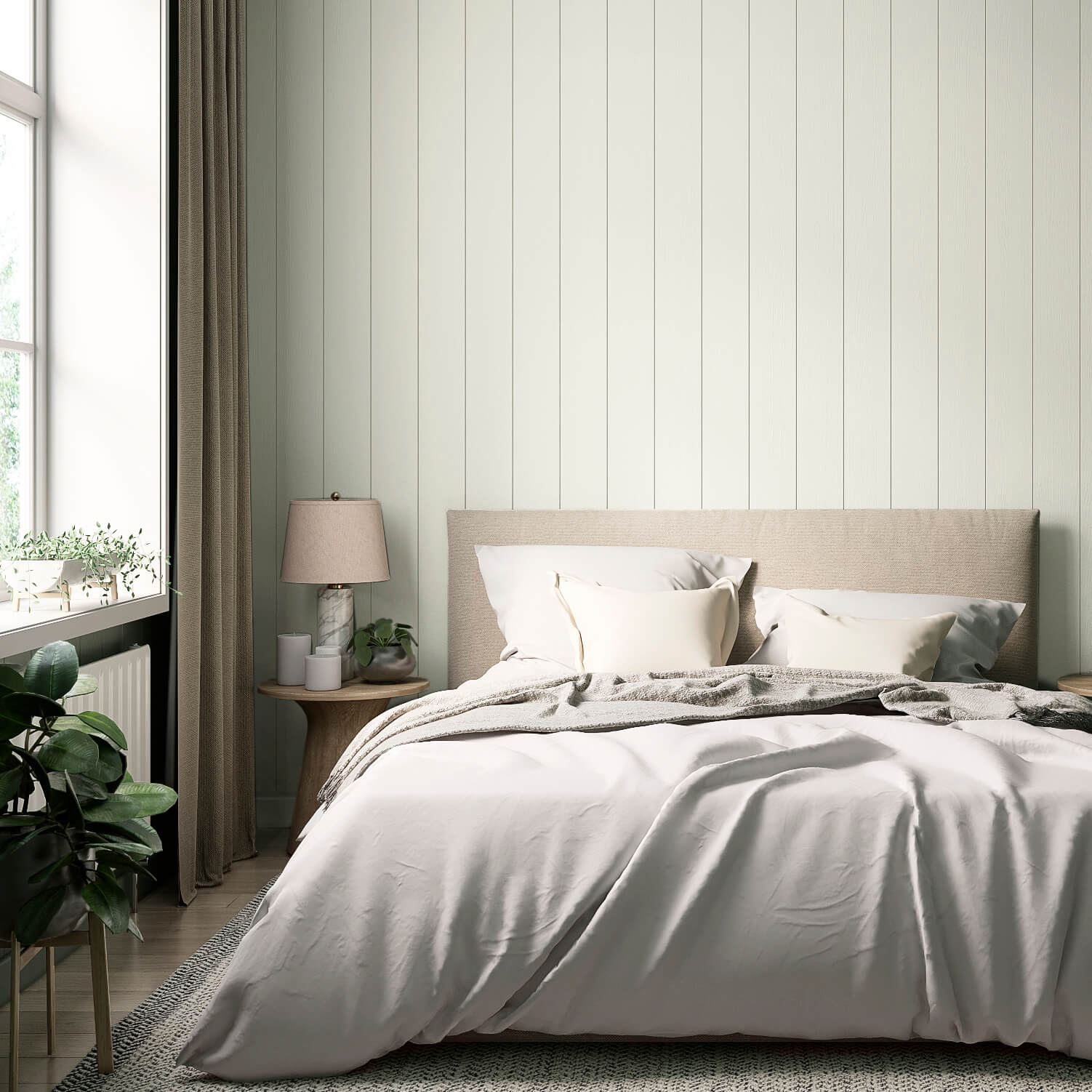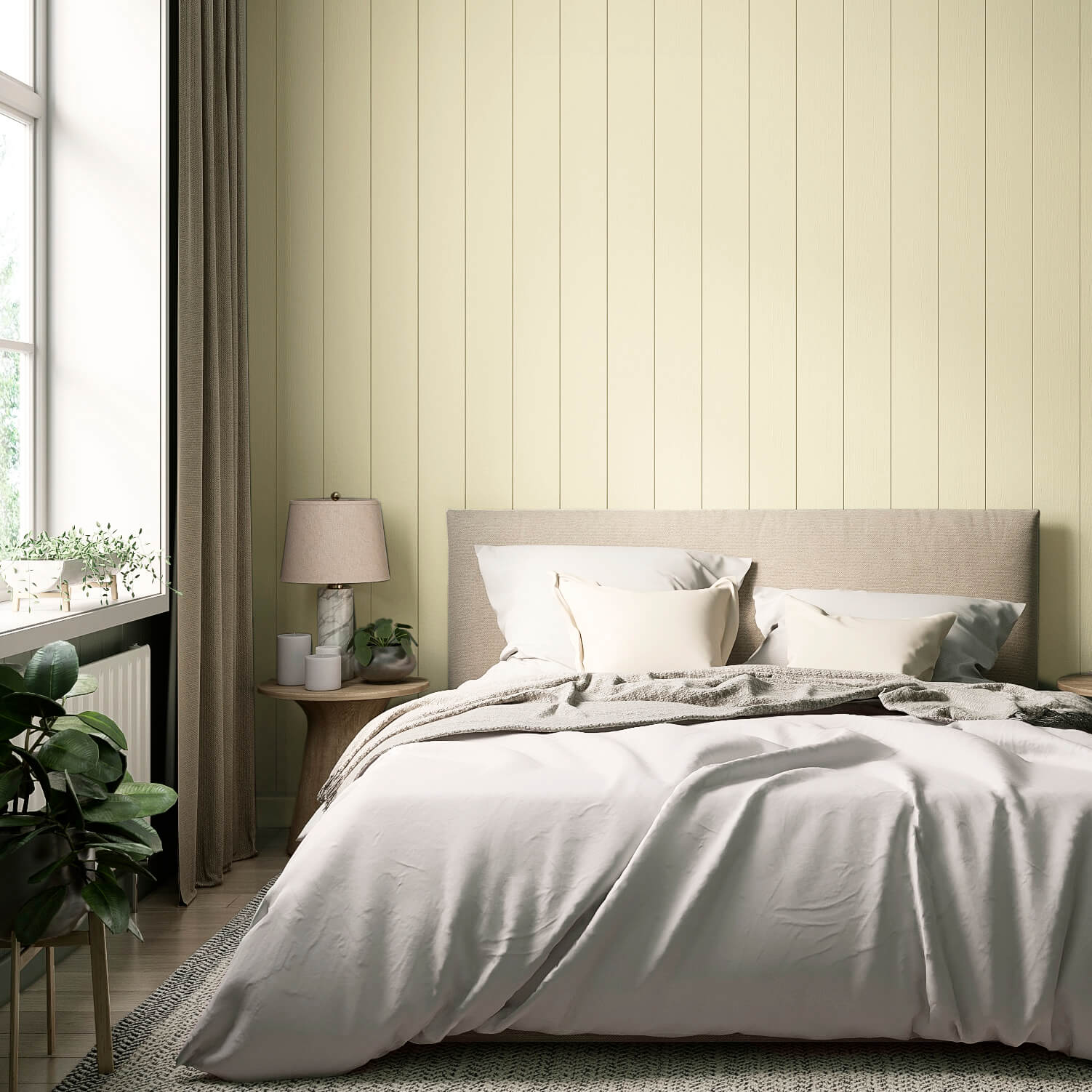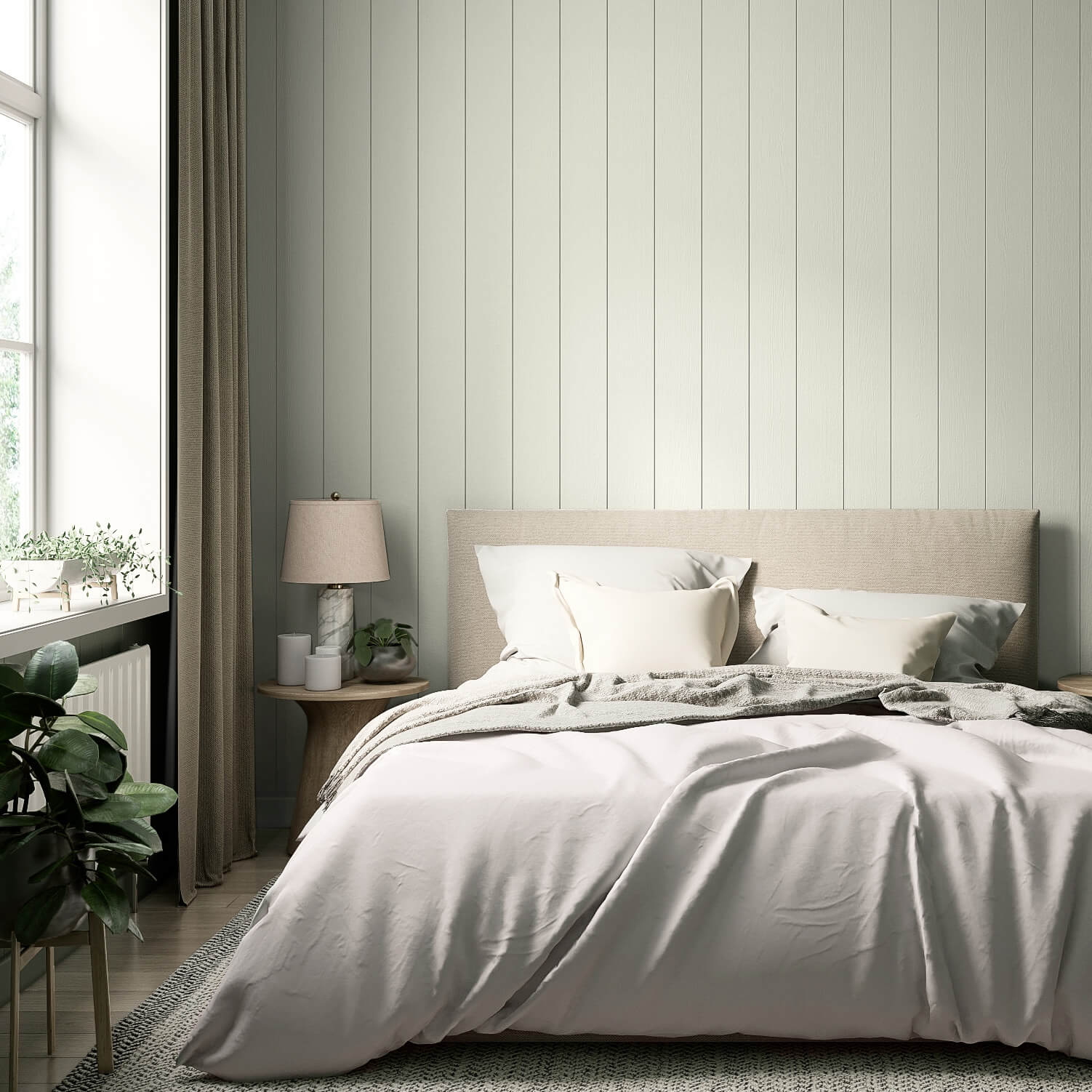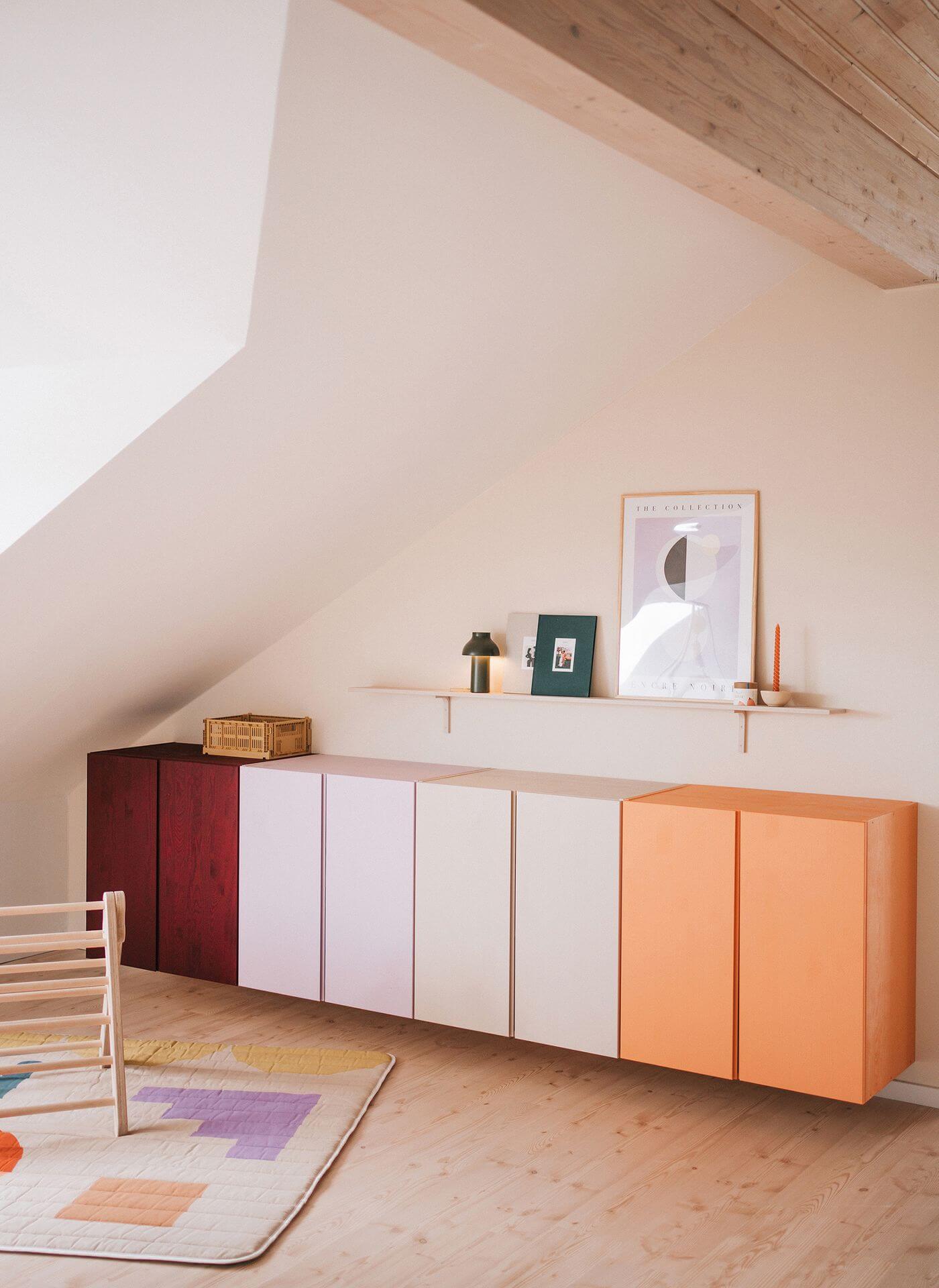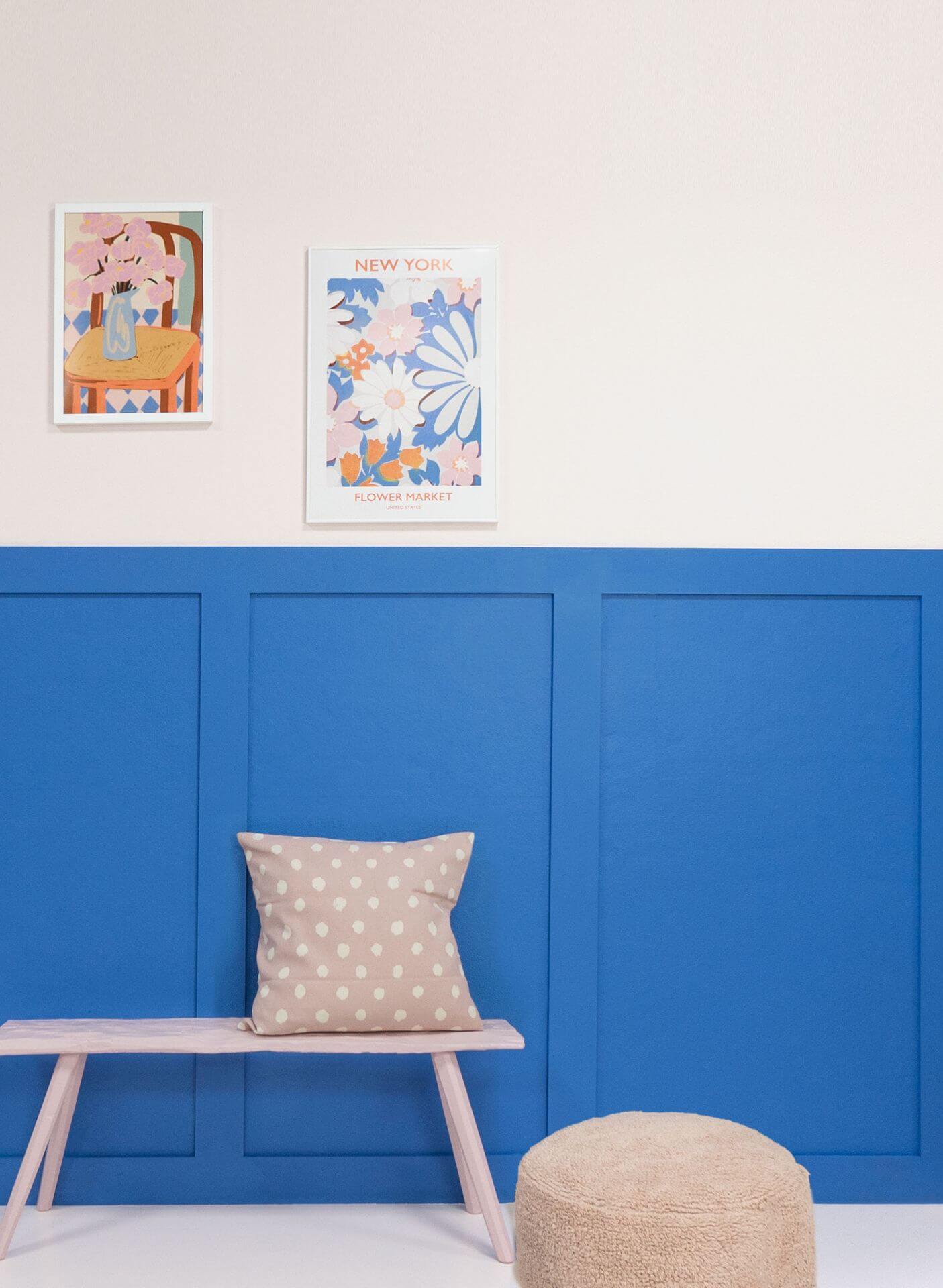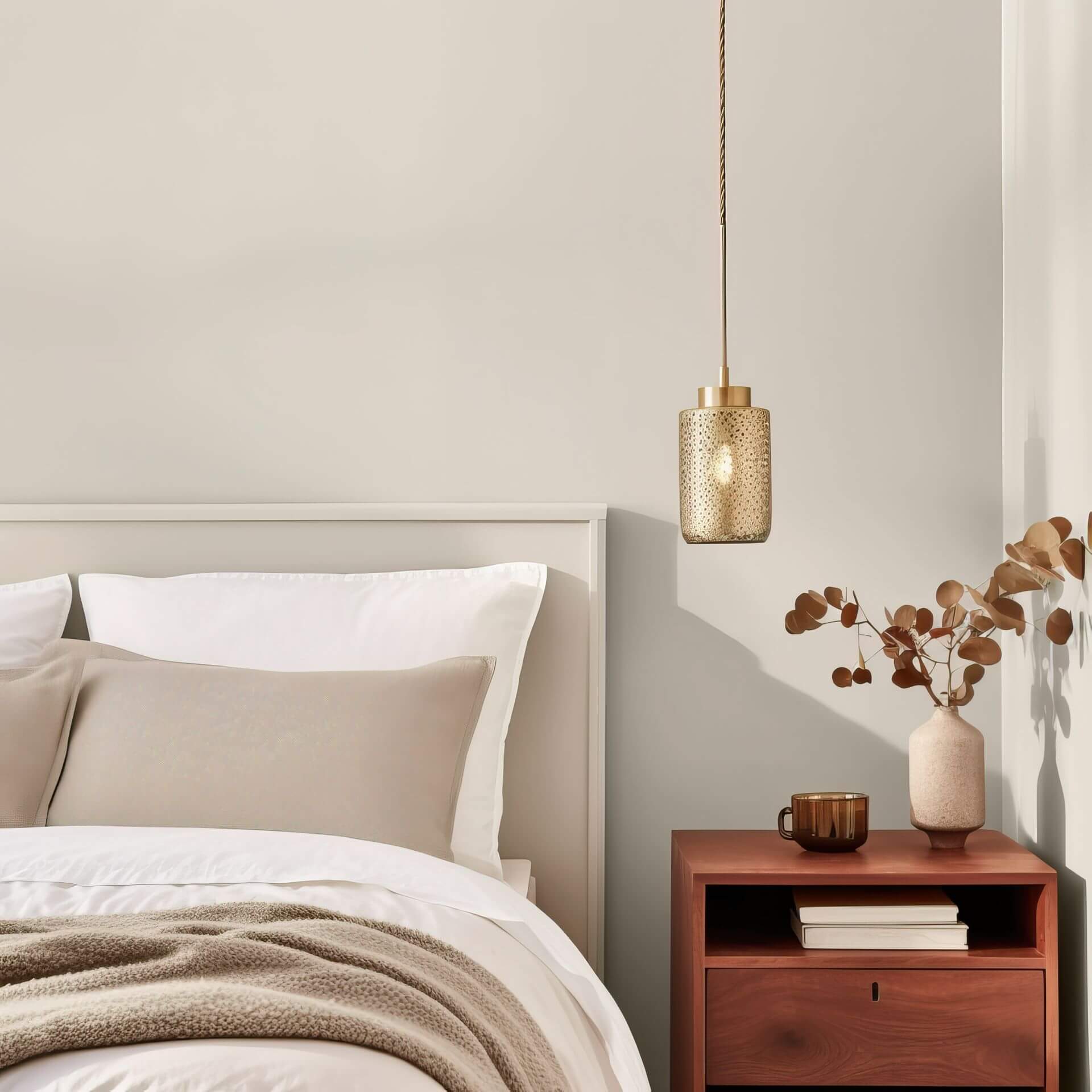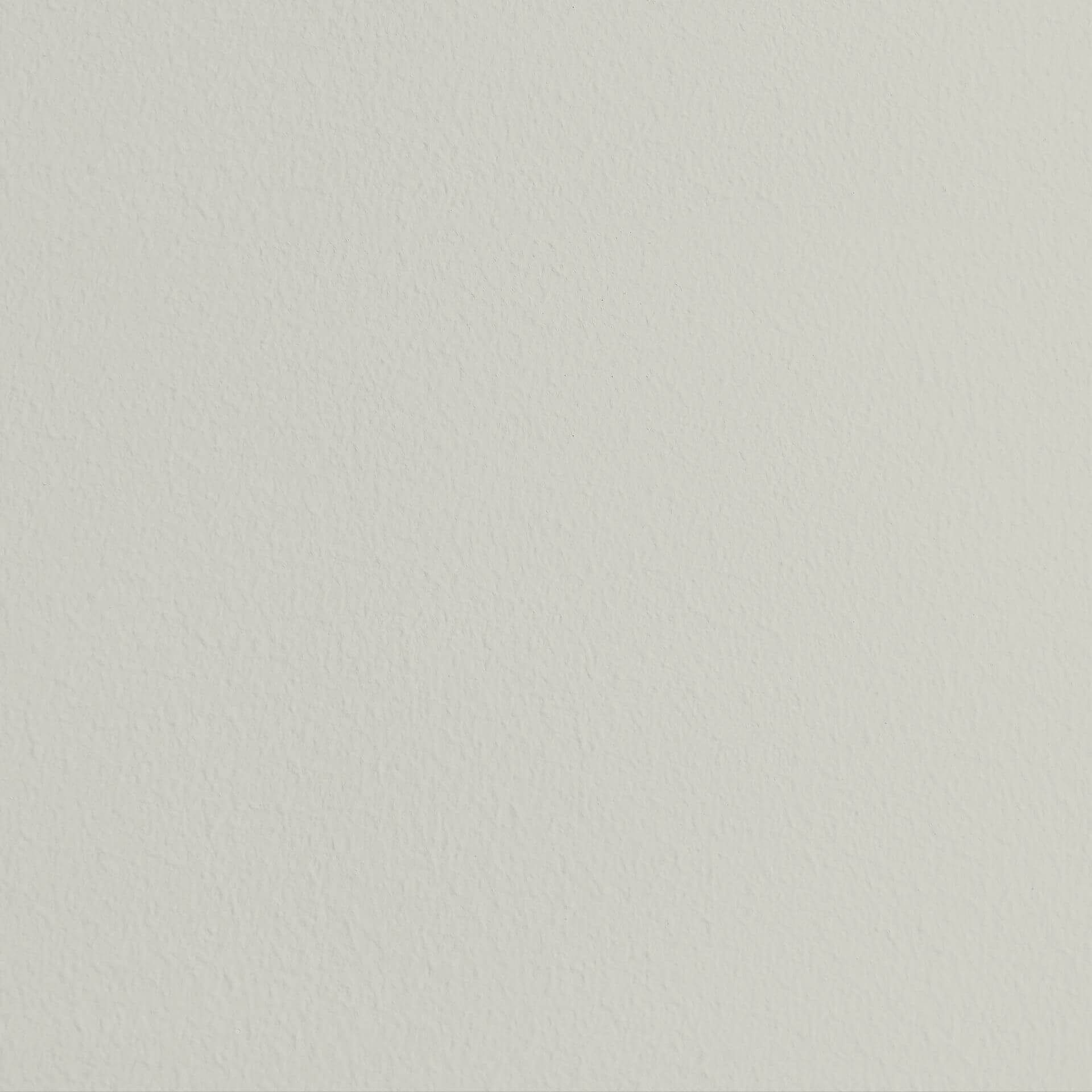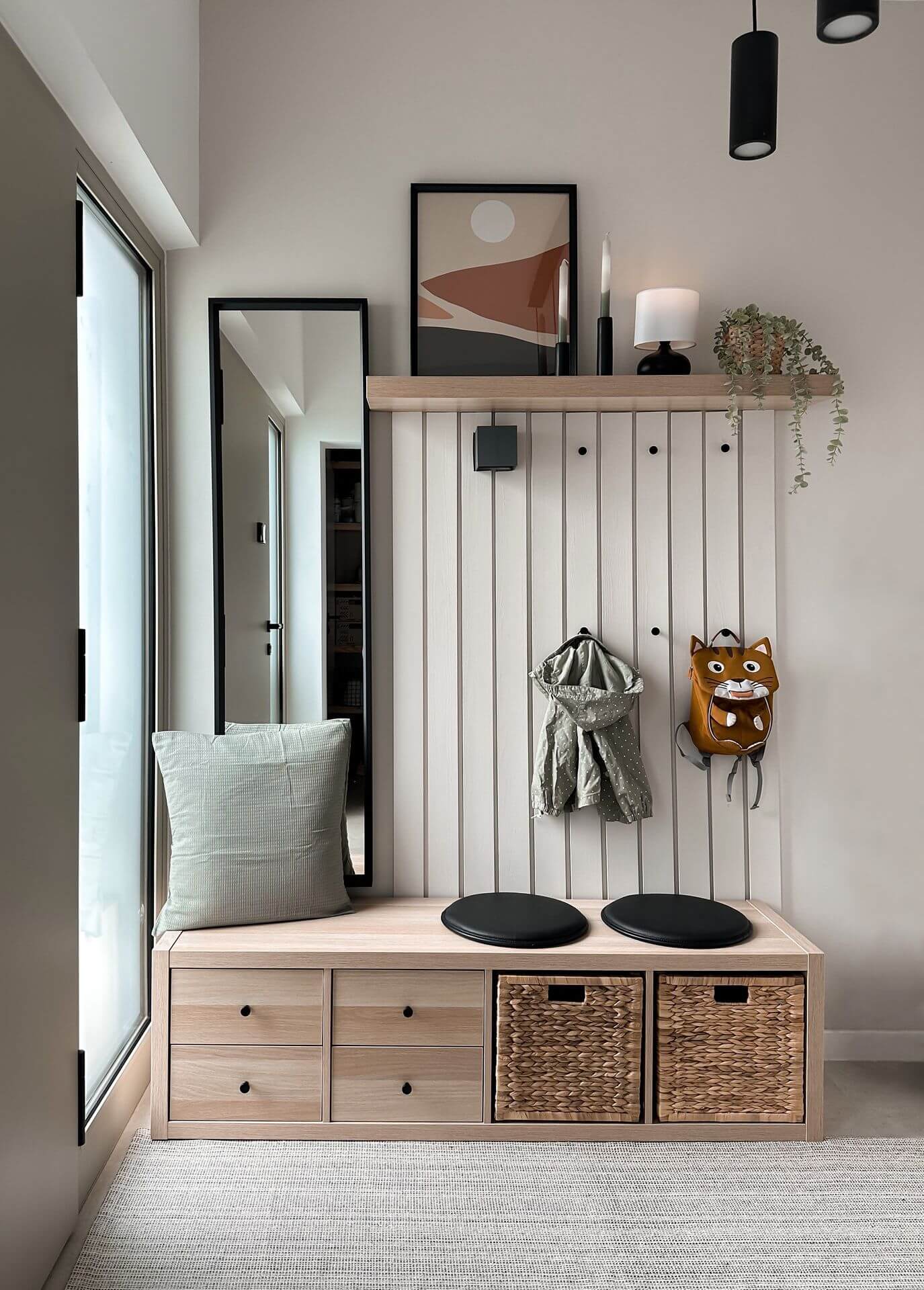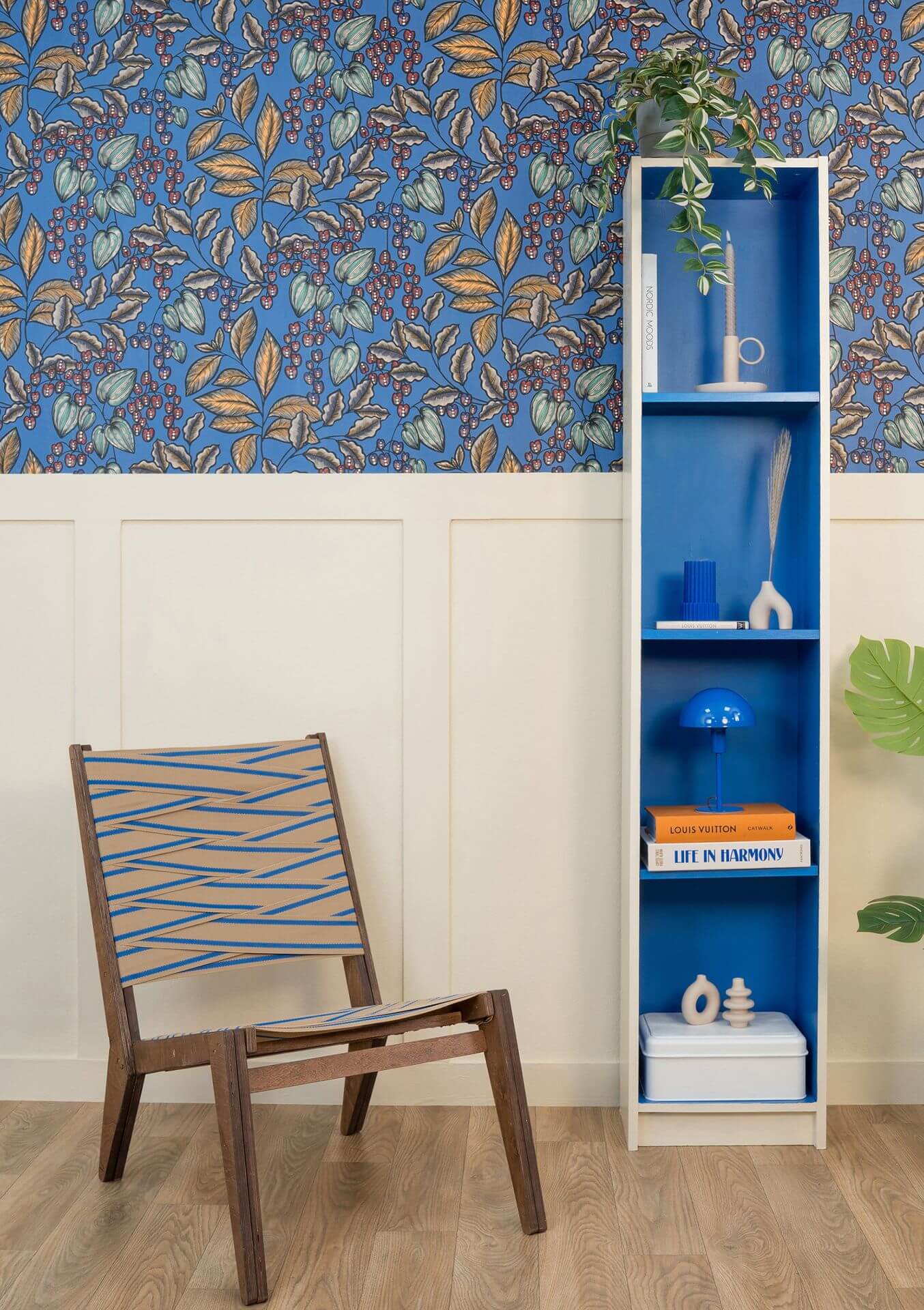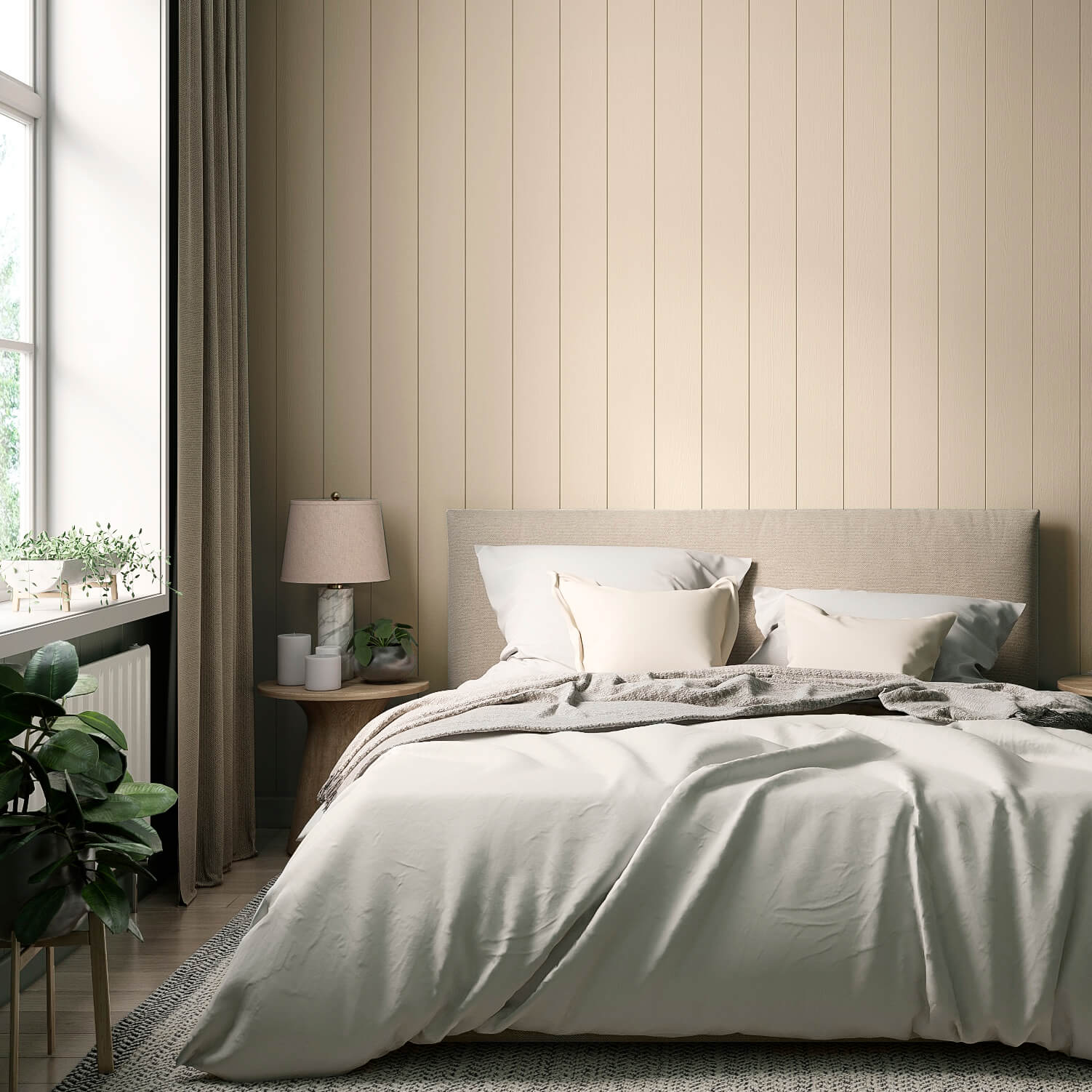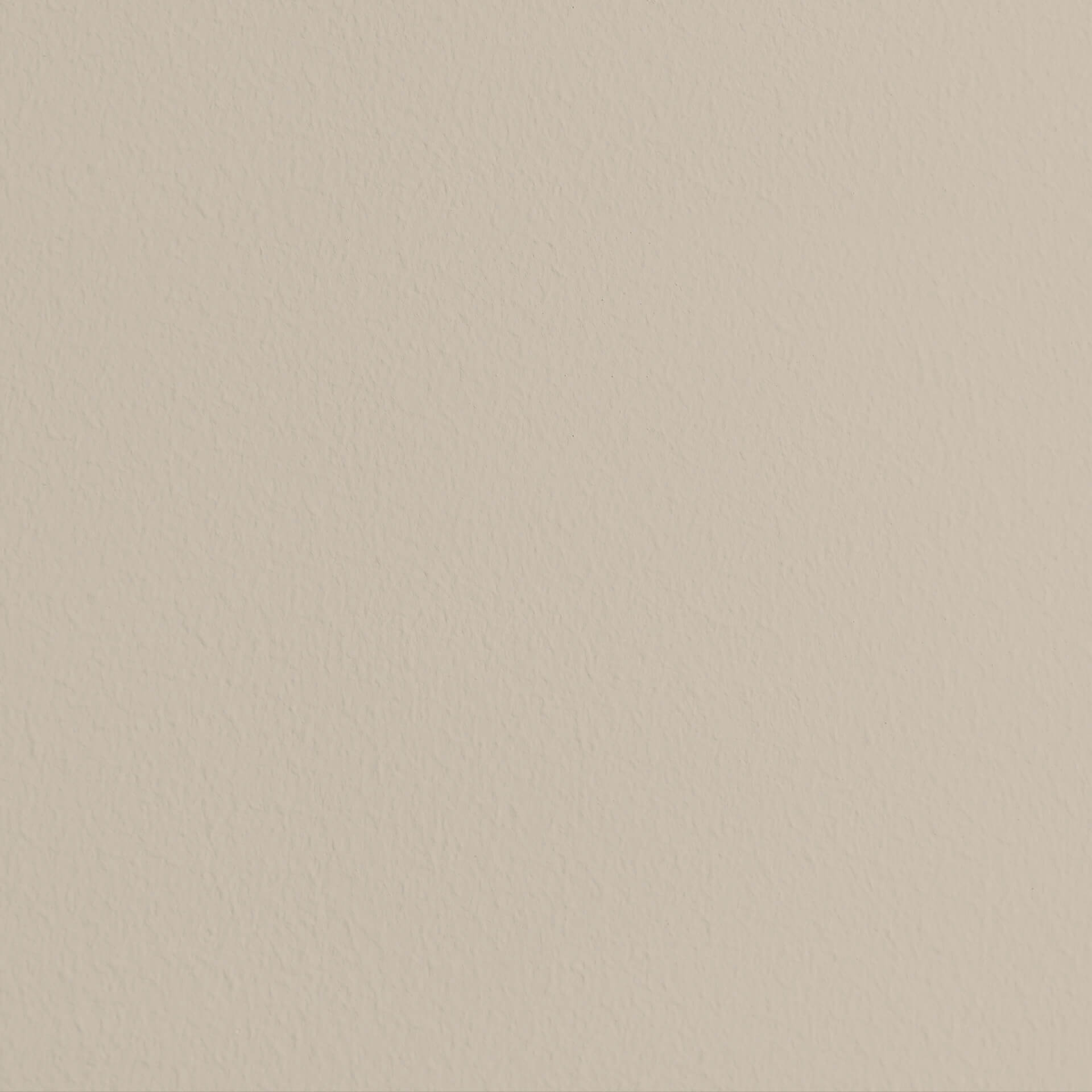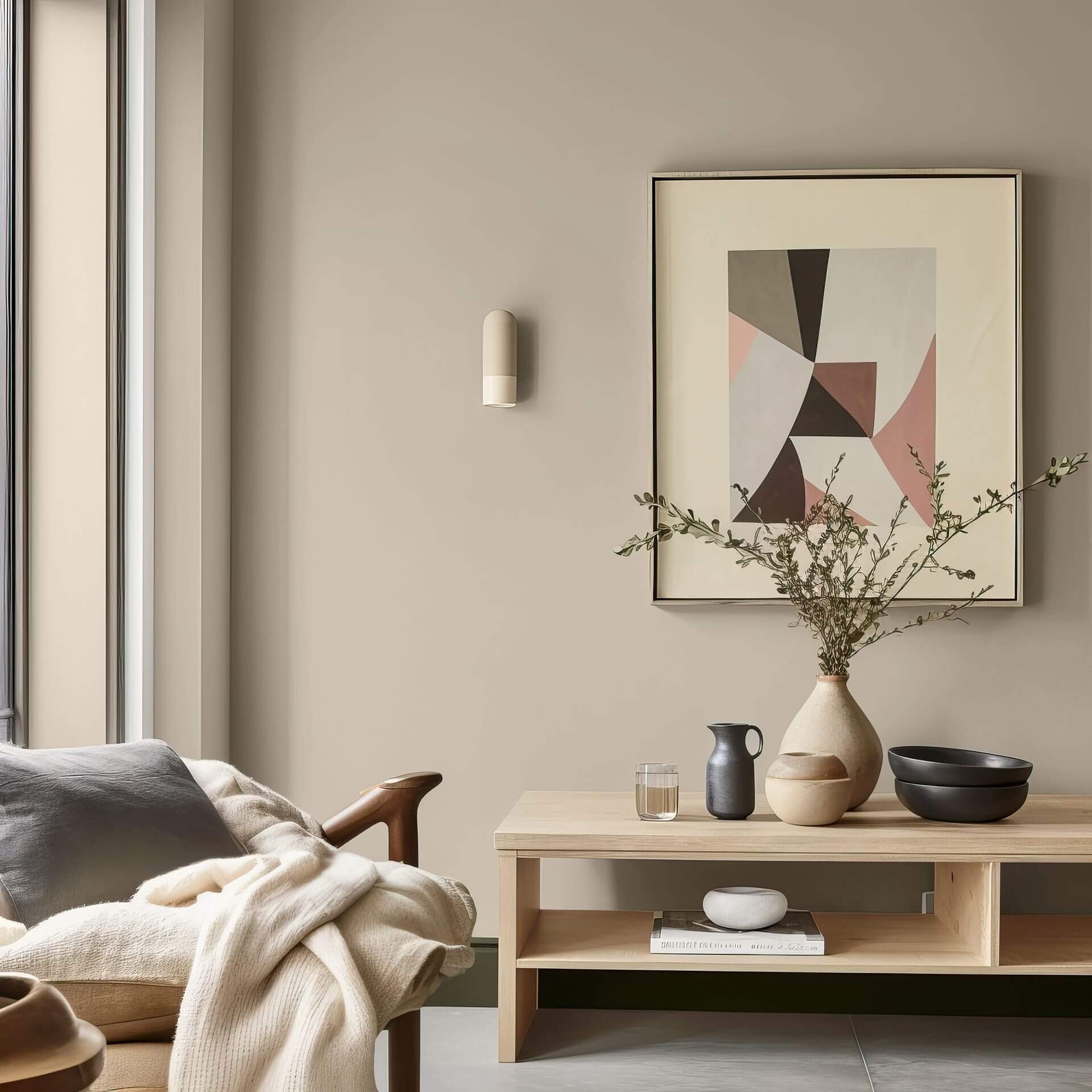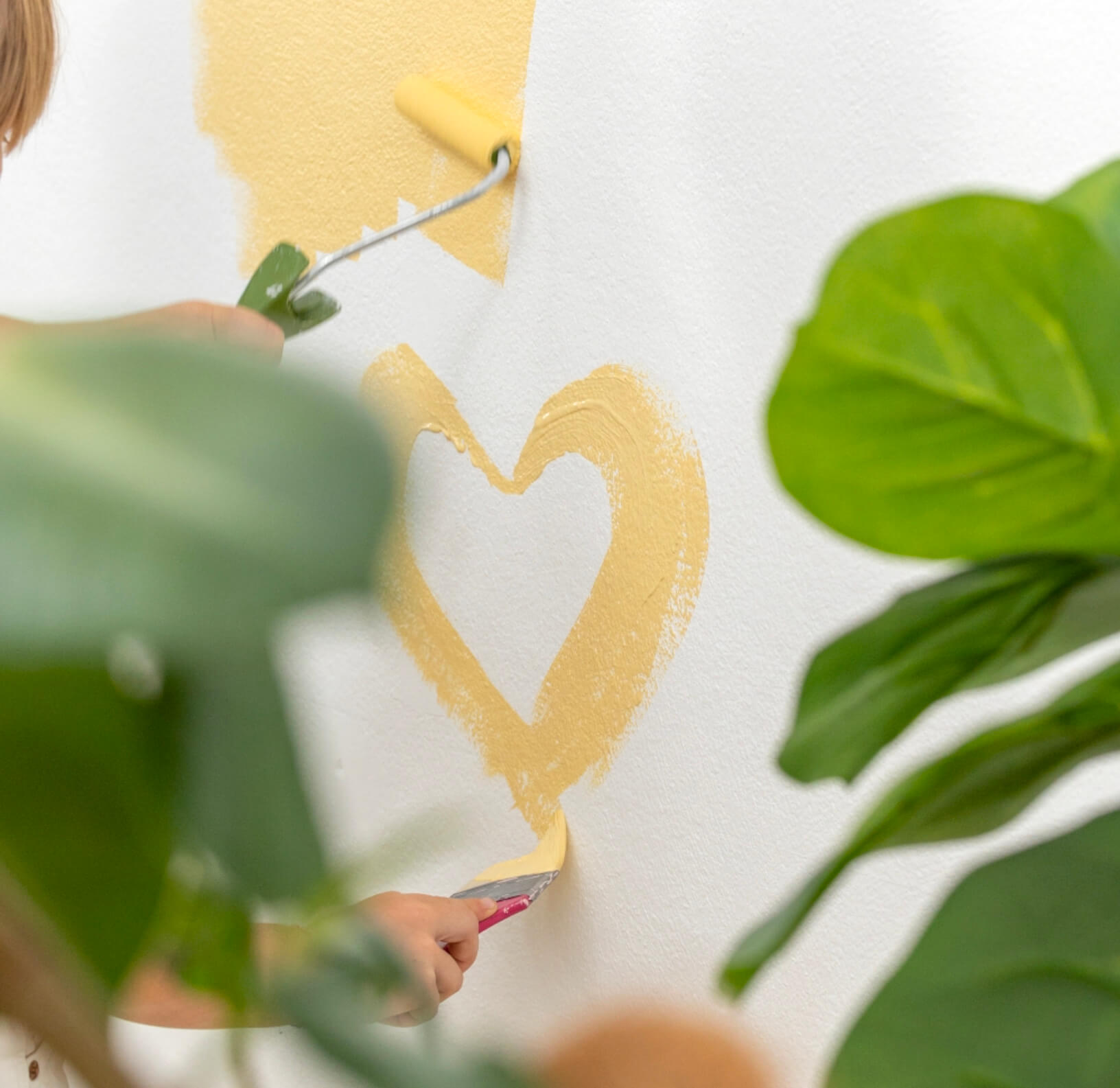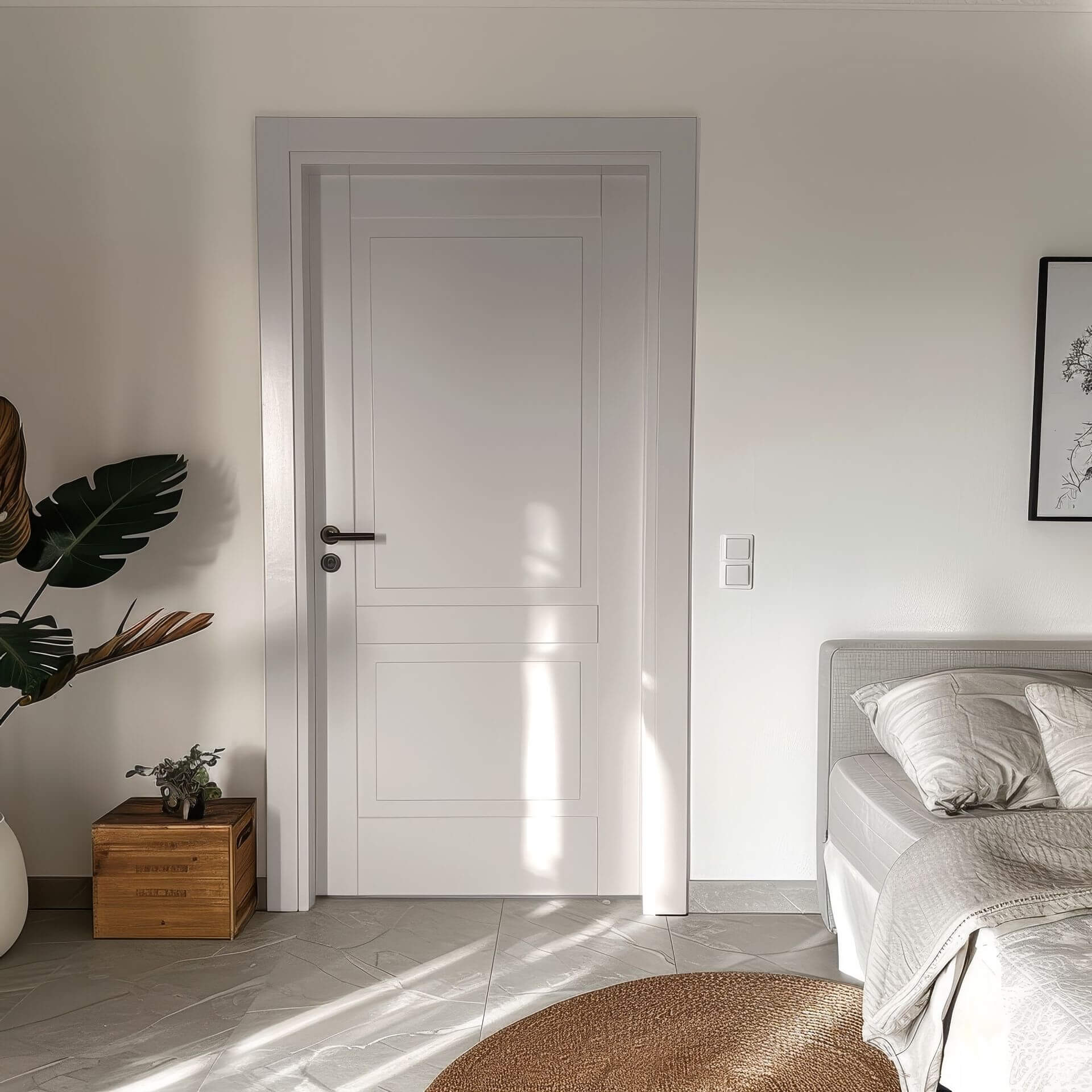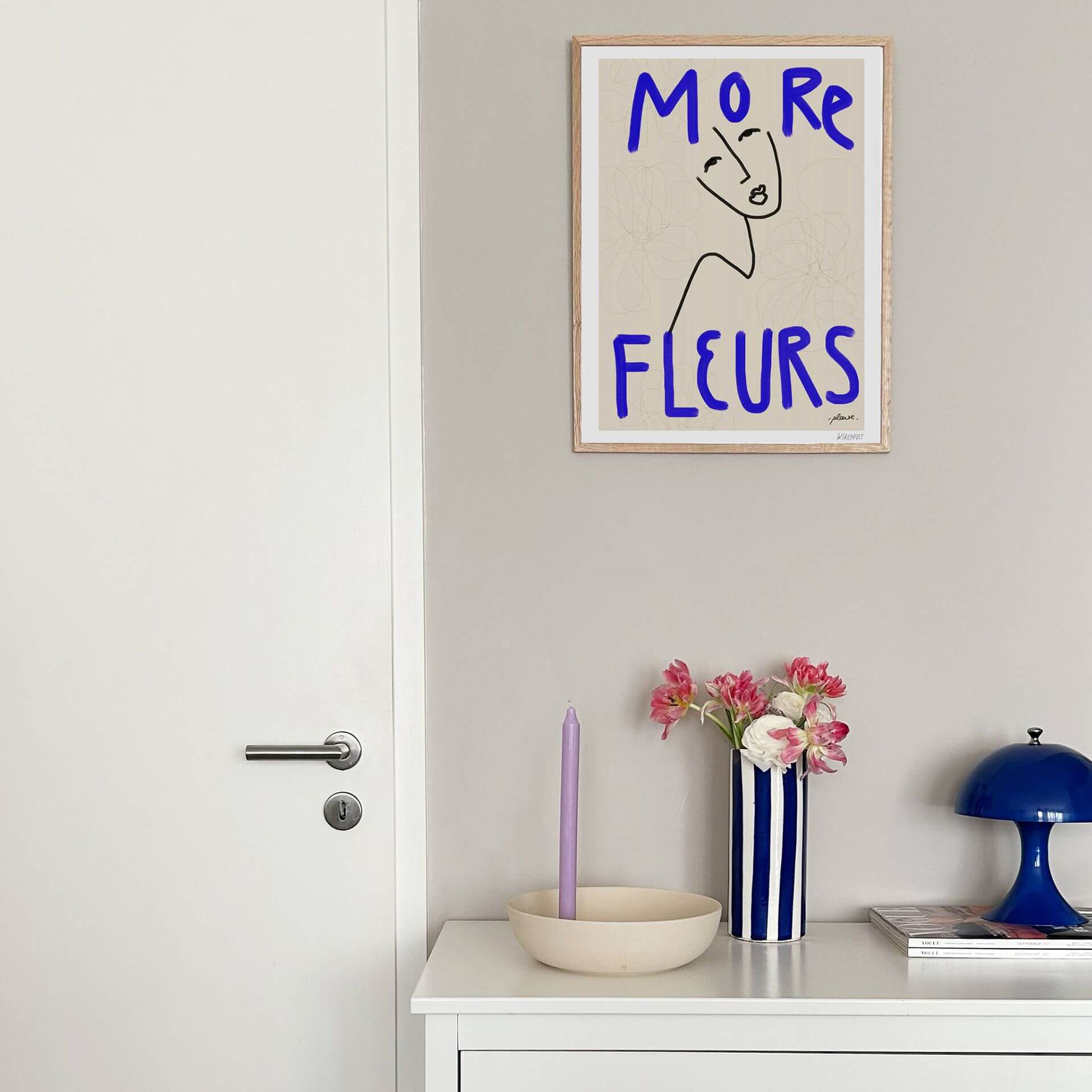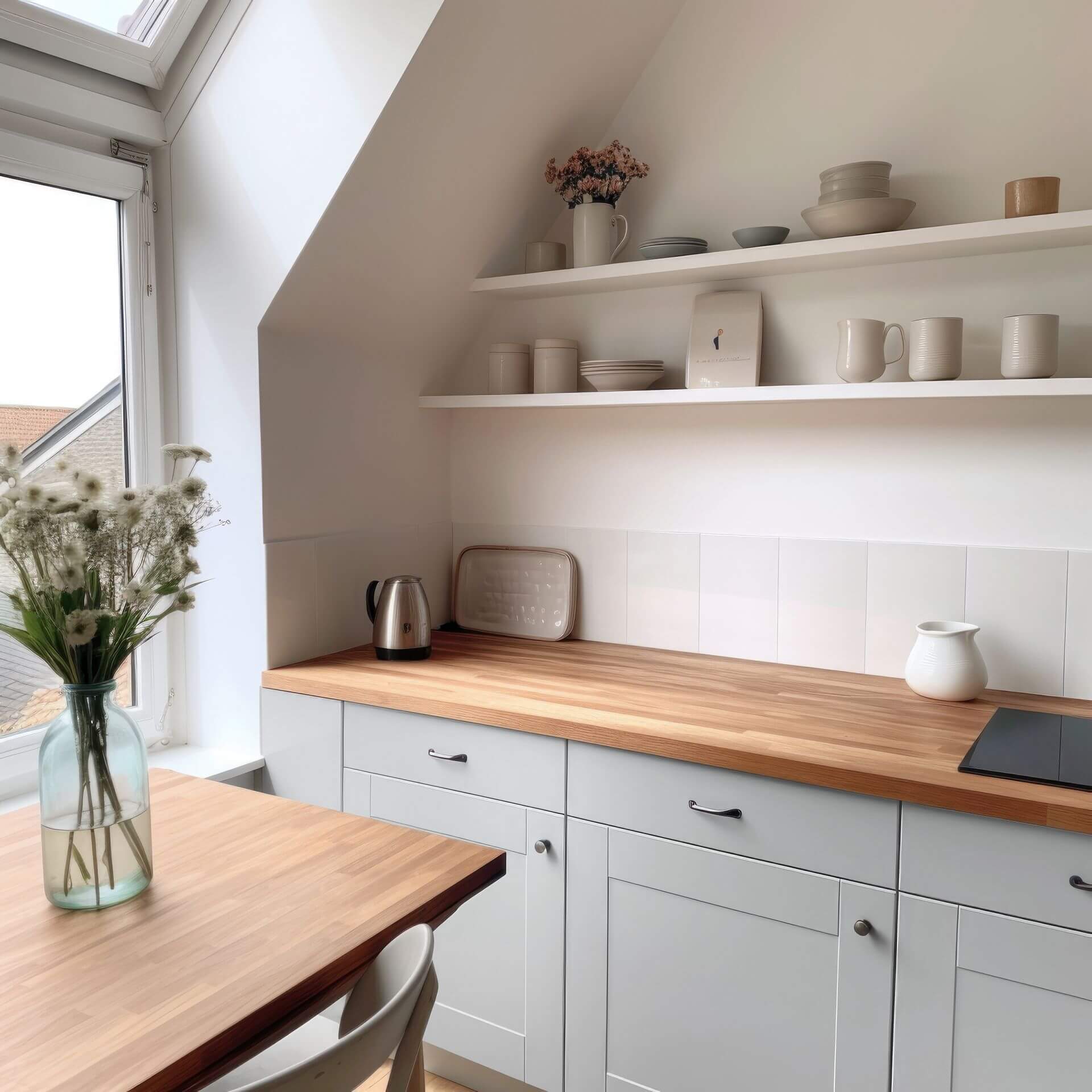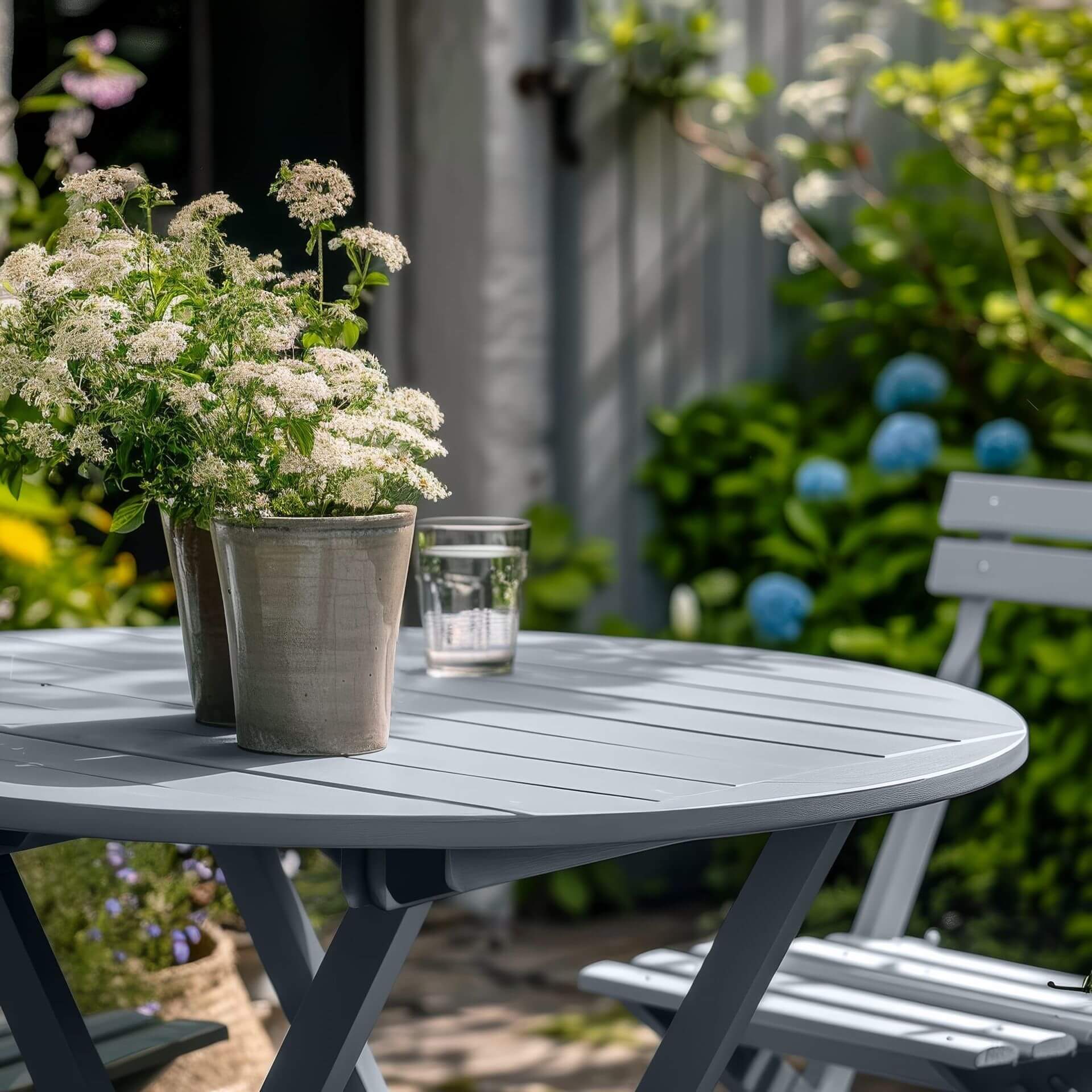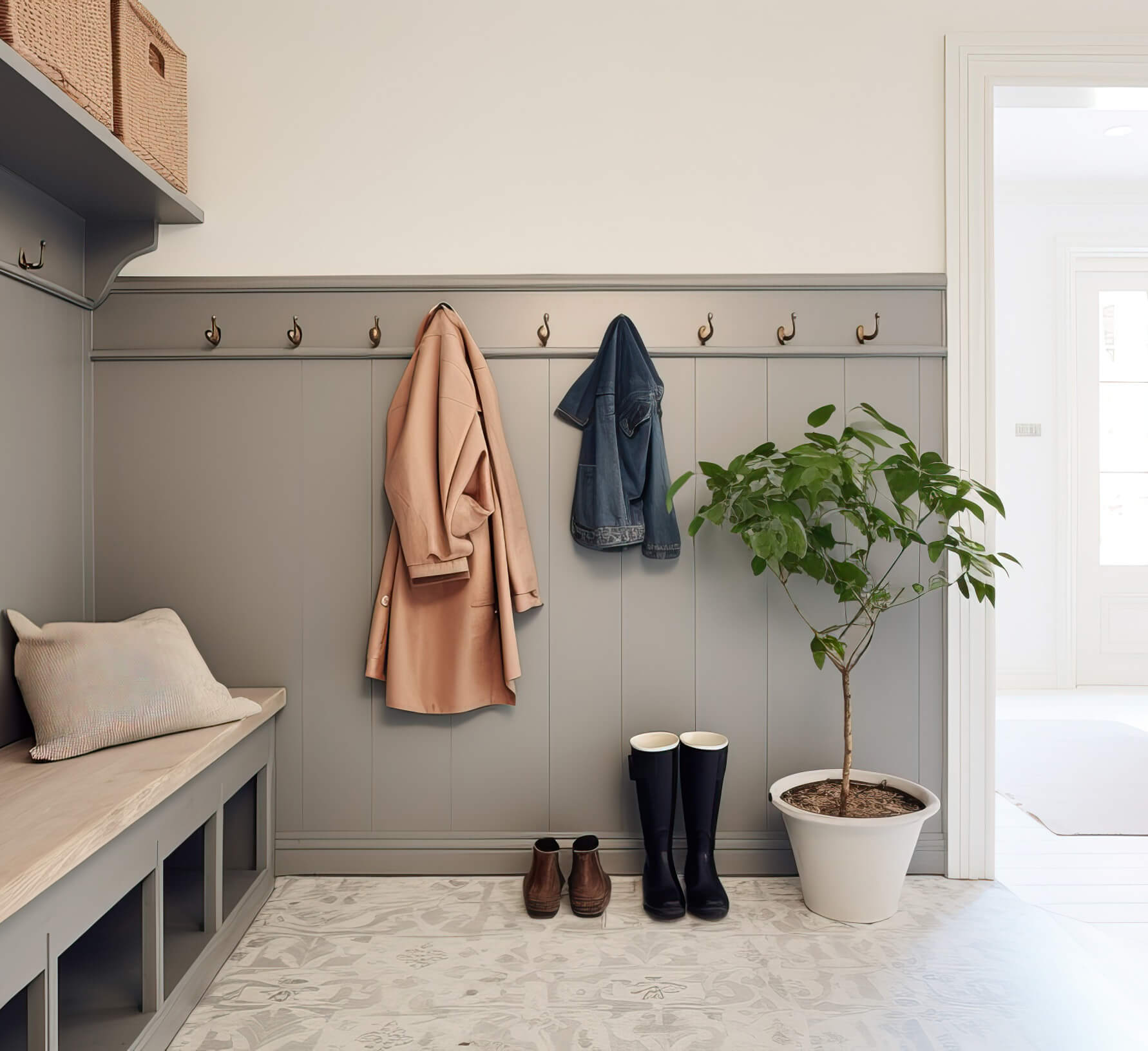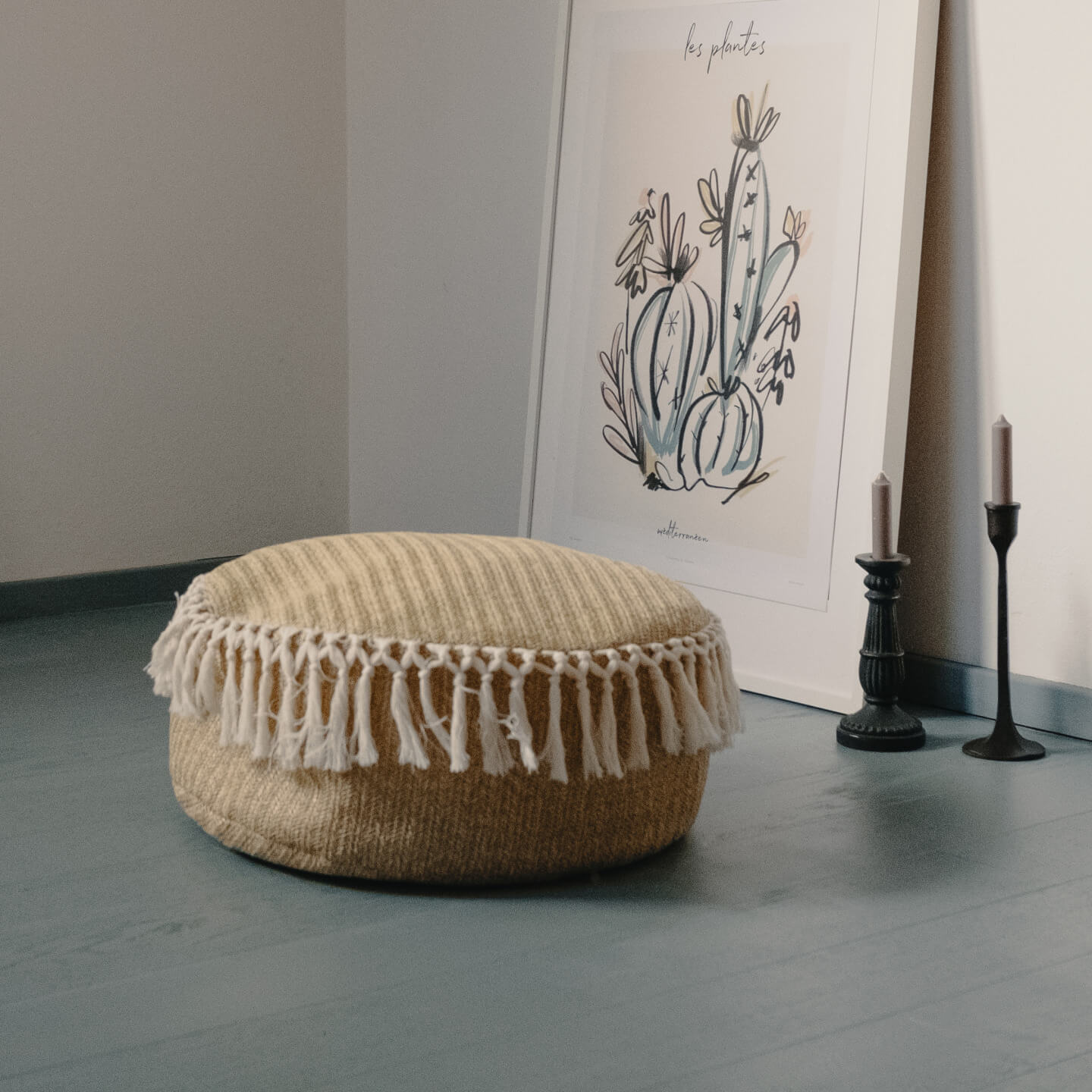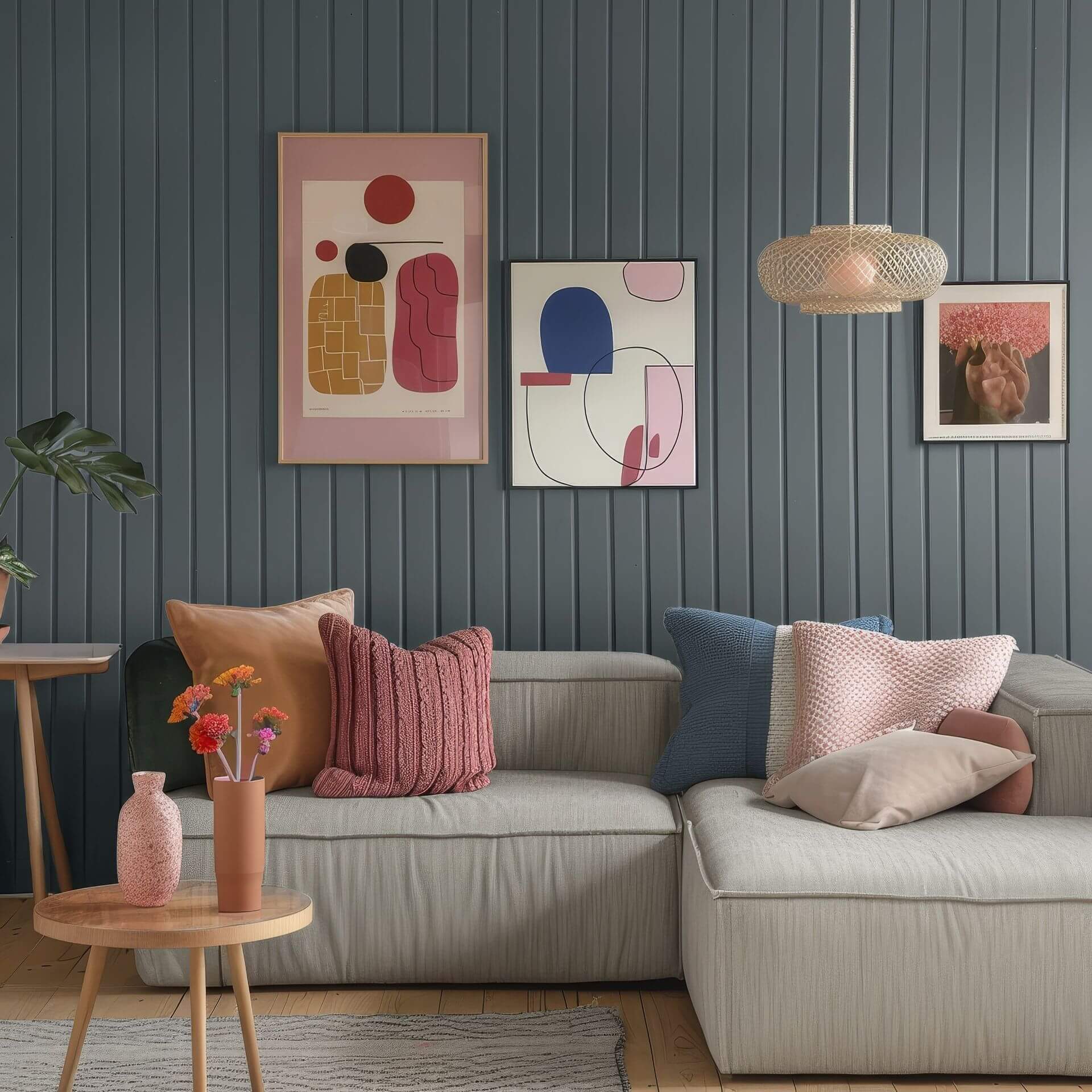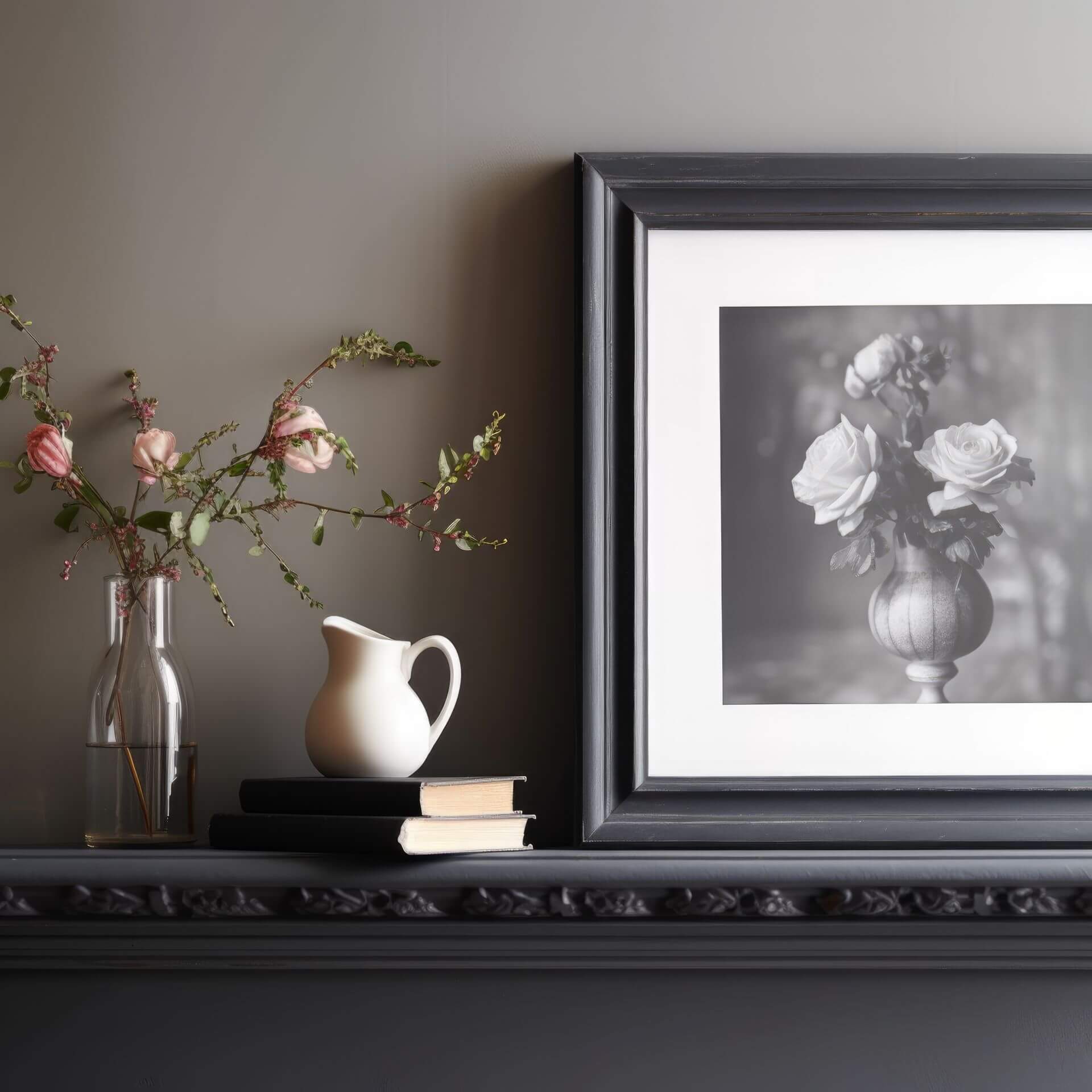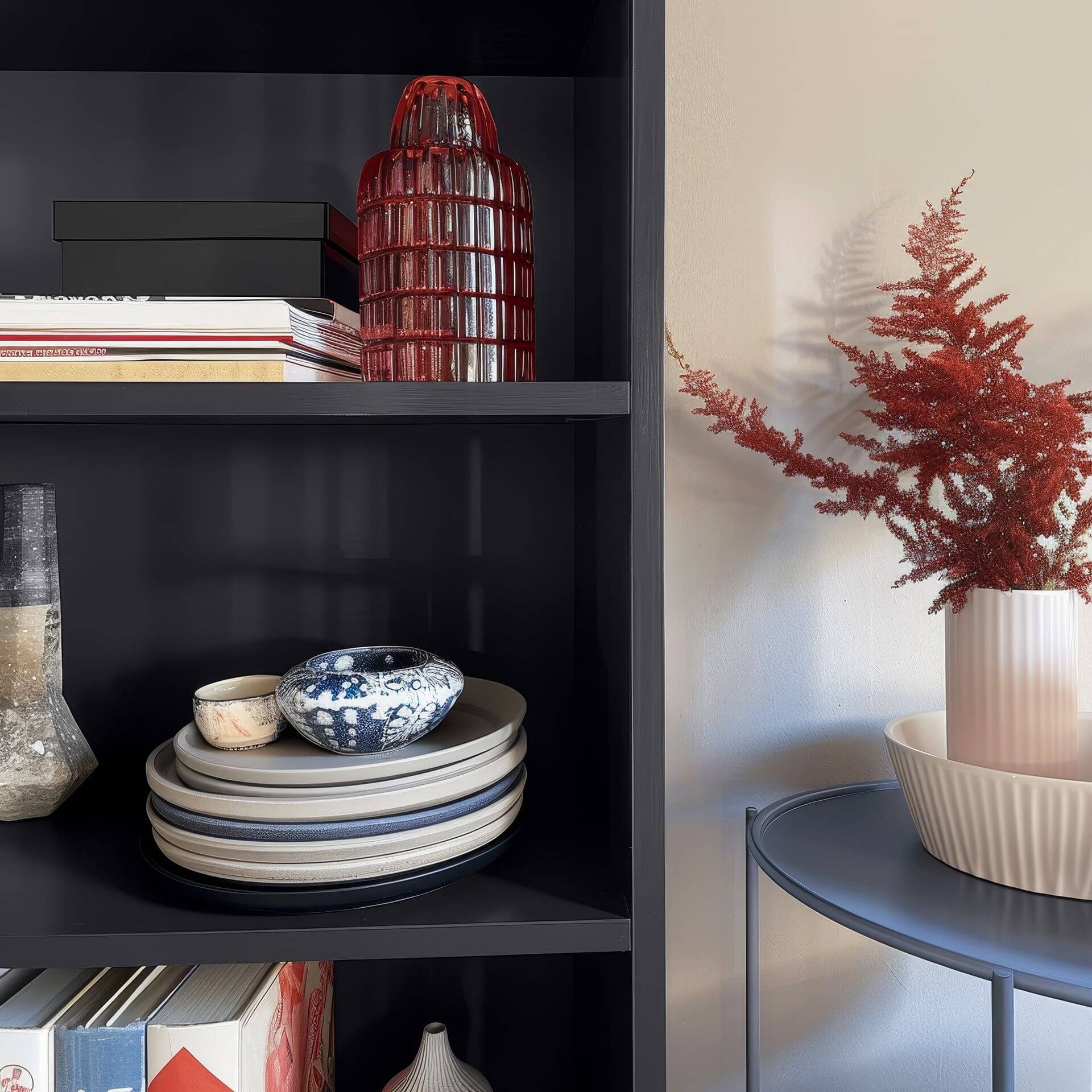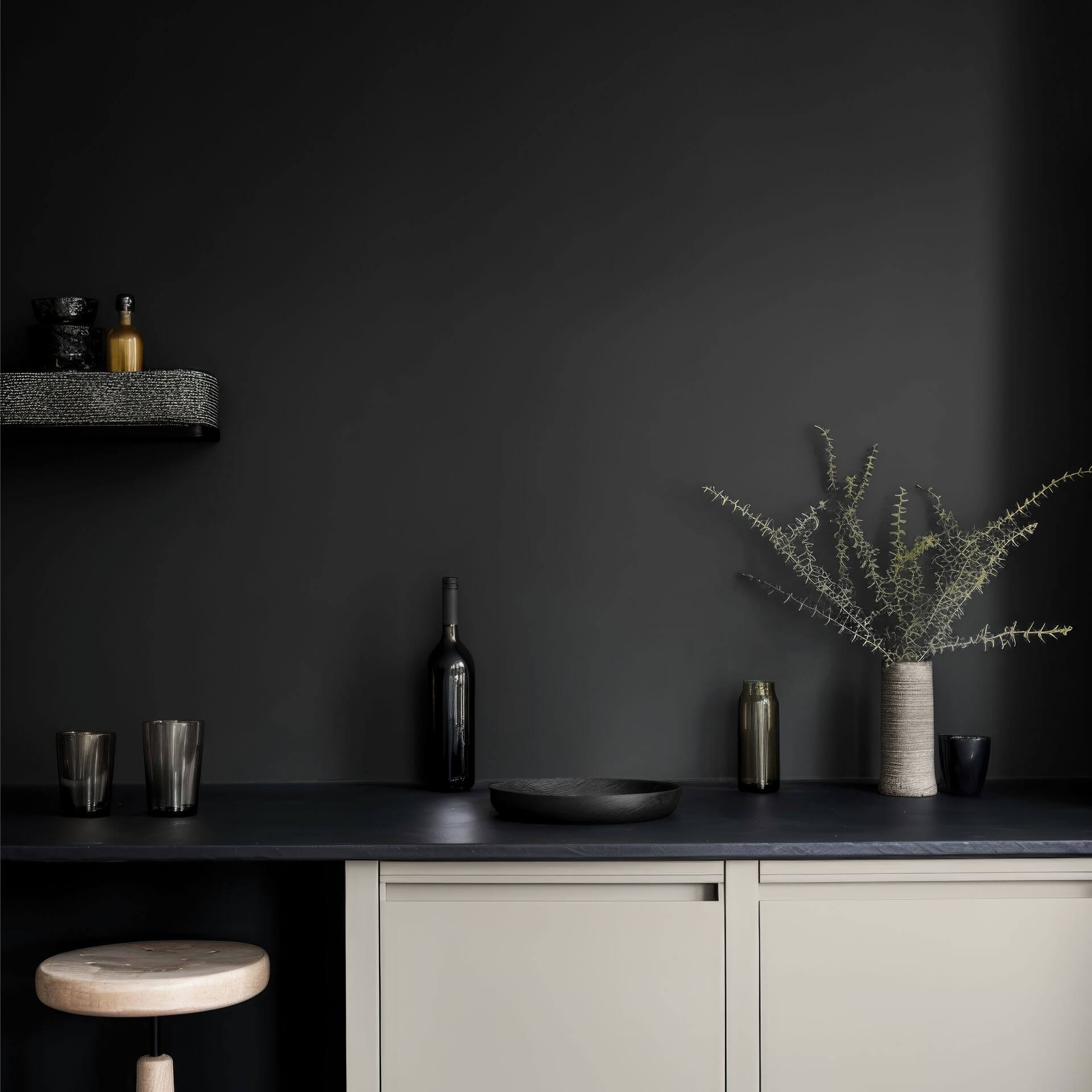

Order paint for plaster: What you need to know
We have the right wall paint for you for different areas of application. When it comes to intensively used areas, such as your staircase, a surgery or rooms in a nursery, The Functional Wall Paint from MissPompadour is the right choice. If you need paint for your living area, you can use one of the following products:
- The Valuable Wall Paint from MissPompadour
- the chalk paint from LittlePomp
What characterises paint for plaster?
Depending on the grain size, plastered walls have a very fine or coarser texture, depending on the type of plaster they are plastered with. For this reason, it is important that the paint spreads well. This is the only way to ensure that the coat of paint is opaque and that the colour also penetrates well into the recesses. Whether you want to paint coloured stone plaster, roughcast or fine plaster - you can use our wall paints for this. You can also apply our wall and chalk paints to lime plaster, simply prime with a deep penetrating primer beforehand. After all, good coverage is the be-all and end-all if you want to enjoy painting and achieve a beautiful result
If you value diffusion-open paint coats, our wall paints are just right for you. They do not seal the walls and allow moisture to pass through with little resistance.
When can plaster be painted?
A rough guide is 14 days waiting time. If your wall is freshly plastered, you need to allow it to dry properly before you start painting. How long this takes depends on various factors such as
- the room temperature
- the thickness of the plaster layer
- the composition of the plaster
With fresh plaster, you should first prime the surface before applying the paint. You can do this with a deep penetrating primer for mineral plaster. However, the primer must also dry thoroughly before you can start.
If your wall is not newly plastered but already has a primer and a coat of paint, you can start painting straight away after cleaning. Please make sure that there is no dirt, dust particles or similar on the wall surface. You should remove these with a broom or hoover before painting. In the event that you have stains on the wall, for example from the dog bowl, oil stains from cooking or soot particles from the oven, you can paint over these areas with To Block. This will prevent the stains from showing through again after painting. So always make sure you have a suitable surface. Once this is all done, you can finally get started!
Choose the right wall paints for plastered walls
You should choose wall paint for your interior plaster. We also offer all our colour shades as wall paints. You can choose from our wide range of colours!
These colours in the MissPompadour Paint shop are suitable for plastering
All our wall paints are suitable for interior plaster. Which colour quality you buy for your wall depends on how your wall will be used. For example, if it is in a frequently used stairwell, kitchen or hallway, a doctor's surgery or daycare centre, you should buy a wall paint for heavy-duty use. MissPompadour The Functional Wall Paint creates an abrasion-resistant and wipeable surface that you will enjoy for a very long time
If, on the other hand, you are planning to paint a wall plastered with textured plaster in your living room or bedroom, you are well advised to use an eco wall paint such as MissPompadour The Valuable Wall Paint. The beauty of this paint quality is that it is odourless, drip- and splatter-free and fantastic to work with. If you are looking for chalk paint for your walls, LittlePomp chalk paint with its soft pastel colours can be used on plaster. If you get tired of the colour, you can simply paint over it
However, we do not have wall paints that are specifically suitable for exterior plaster in our range.
Which paint can I use for interior plaster?
All our wall paints that you can use for wallpaper and woodchip can also be used for plastered walls indoors. If you have cracks and drill holes in the walls, you should fill and sand them smooth before painting. You can then start painting!
It all depends on the primer!
If your surface to be painted is freshly plastered, there's no way around a primer. After all, you want to achieve a beautiful result. Especially in the case of filled areas, drill holes or other irregularities, you can create a perfectly even surface with the right primer. Deep penetrating primer is the right choice here to prepare your wall for painting. A primer is also necessary beforehand if you want to paint over lime plaster. Use our MissPompadour - To Prime Walls, for example, or any other deep primer. This always applies to absorbent substrates such as gypsum plaster or freshly plastered walls
Painting plastered walls: a few tips for application
Tip 1: Before you start painting, masking and protecting surfaces that should not come into contact with the paint is an absolute must. Even though our paints hardly splatter, it is not always possible to prevent spillages in the heat of the moment. The reward for your preparatory work is a guaranteed great painting result!
Tip 2: A roller for wall paints is used for painting. The rougher your textured plaster is, the fluffier your roller should be. In addition to the roller, you will need a brush for the corners and edges of your wall. Our sustainable brushes are particularly suitable for wall paints. You can also find other sustainable painting tools for your project in our shop.
Tip 3: You should plan with 2 coats of paint. After a drying time of approx. 4 hours, you can start with the second coat. The colour only becomes really saturated with the second coat. Areas in the plaster that you may not have "caught" with the first coat are also covered after the second coat. In this case, you can simply apply the wall paints partially with a brush. If you are still not satisfied, you can of course paint again.
Can I paint directly onto any plaster?
With the right preparation, you can paint on any plaster. If you have primed with a deep primer, the way is open for painting on your plastered wall. If you are painting on an absorbent substrate or would like to apply a primer, you can dilute the first coat with a little water. Apply a thick coat in the second step.
How much paint do I need?
How much paint you need for your project depends, among other things, on the structure and absorbency of your plaster. To determine the paint quantity, you can use the practical Paint Calculator in our shop. Here you enter how many square metres you want to paint with the selected colour and the system calculates the paint consumption. If your plaster walls are very rough, you may need a little more paint than calculated. As an average value, you can assume 1 litre of paint for 10 m² with a double coat.
Order paint for plaster in the MissPompadour Paint Shop
Once you have decided on the right wall paints for your project, you can easily order them from our shop. Shipping is climate-neutral with DHL Go Green. Our packaging is plastic-free. We only use recycled plastic material for our 2.5 litre paint buckets in order to adequately protect your sensitive goods on the way to you. Our sturdy cardboard boxes are made entirely from recycled paper and are manufactured exclusively in Germany. Do you have any questions? Our customer service team will be happy to help you with your project free of charge!

